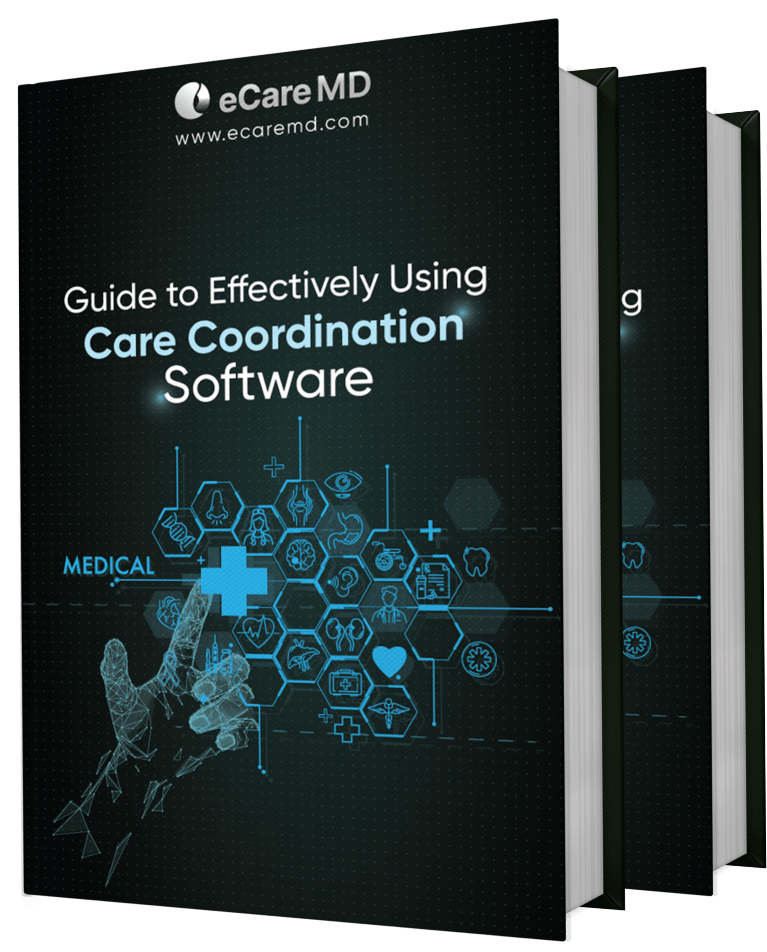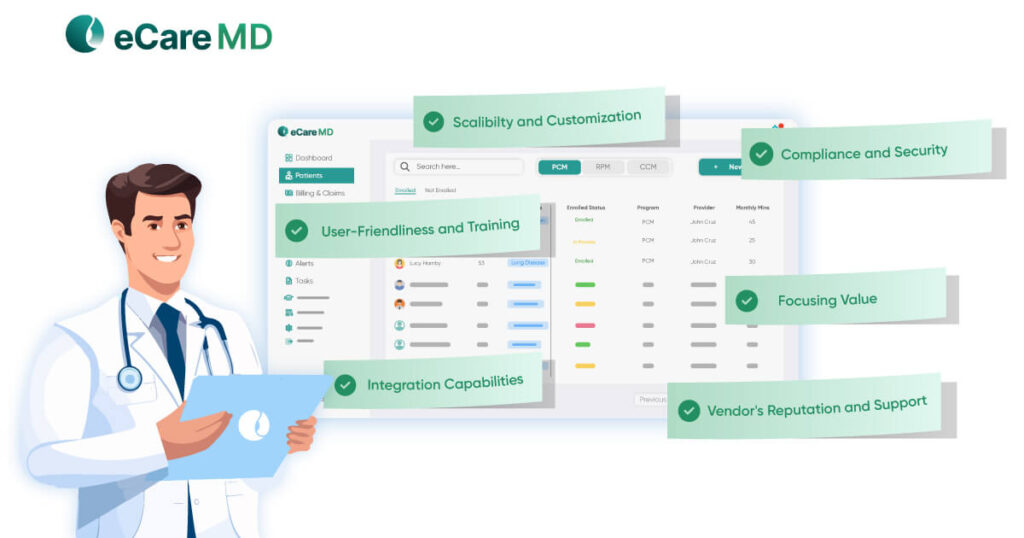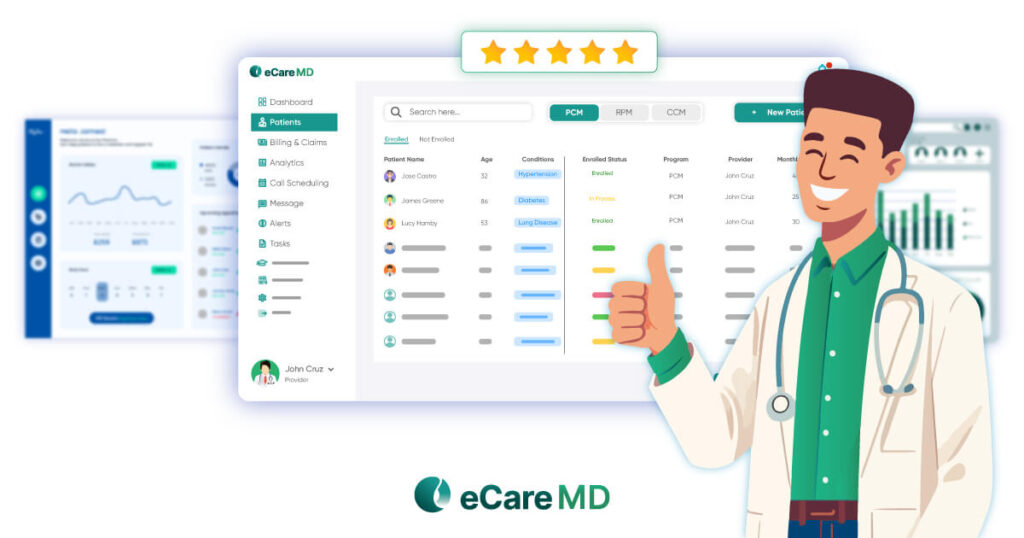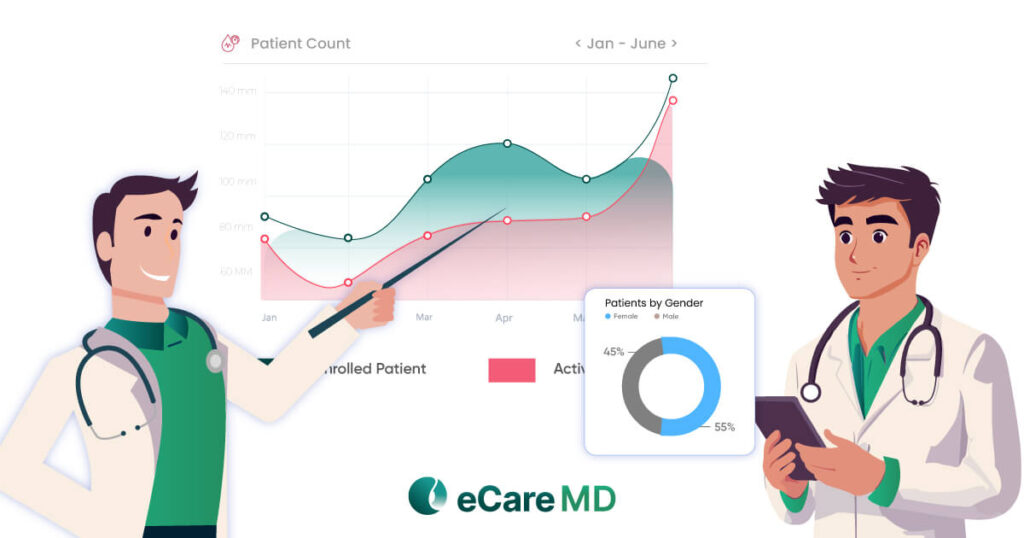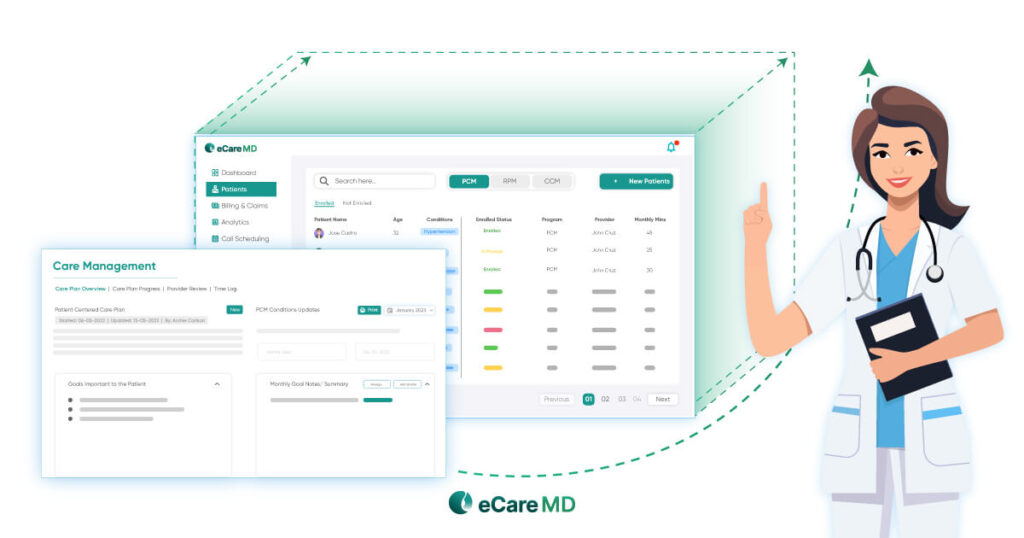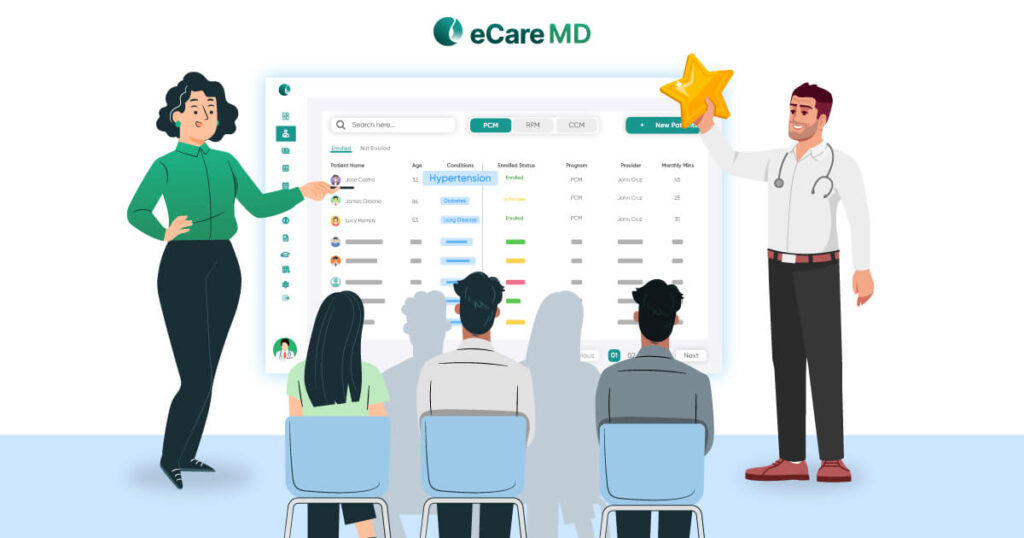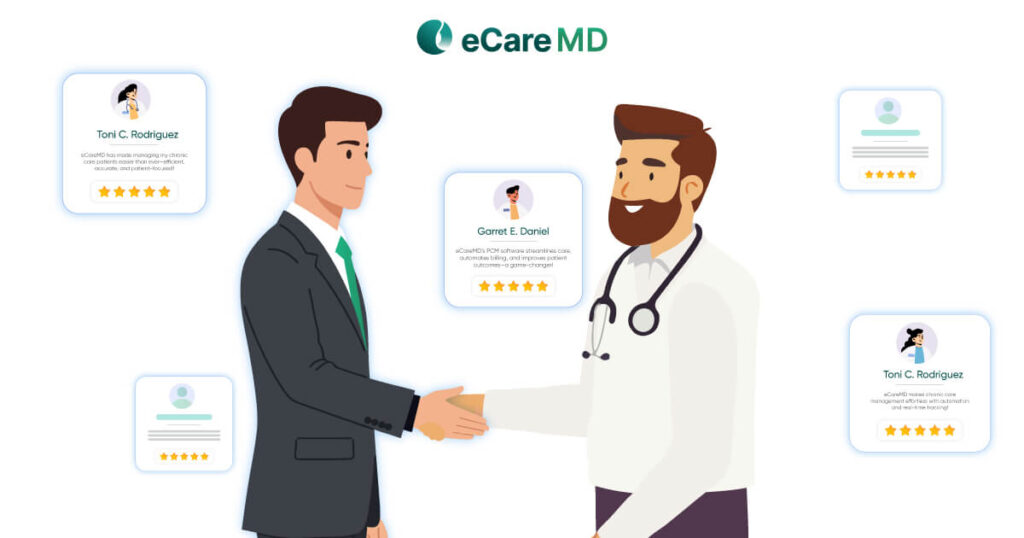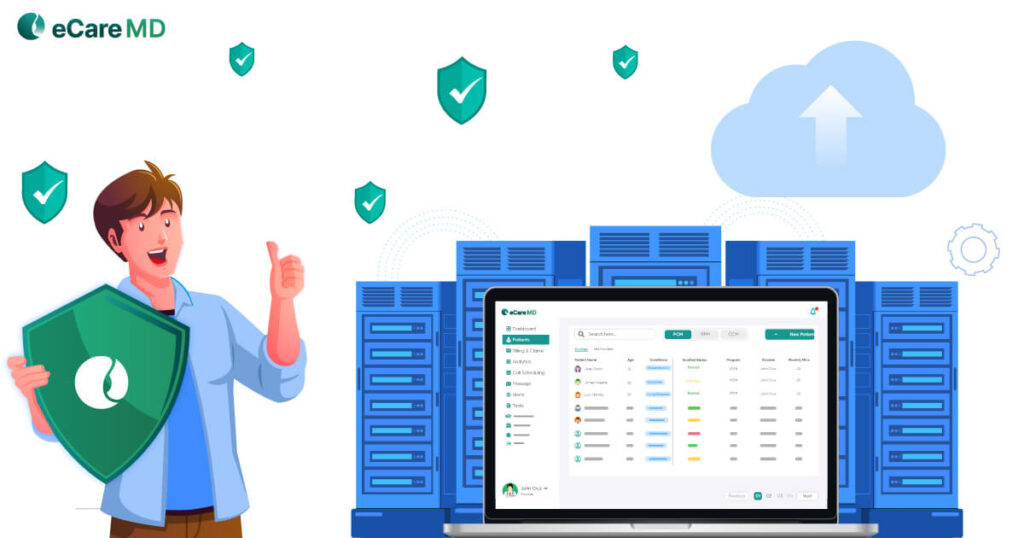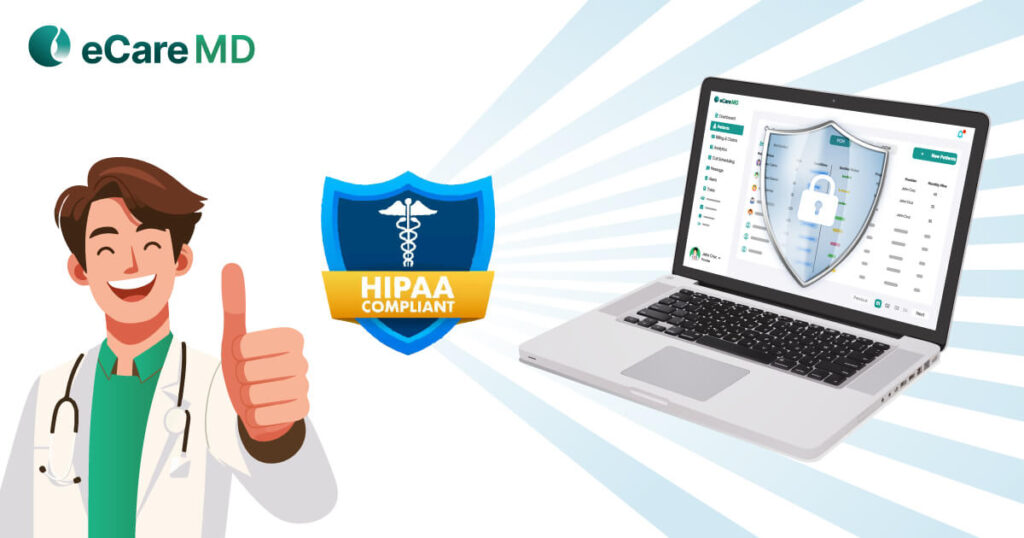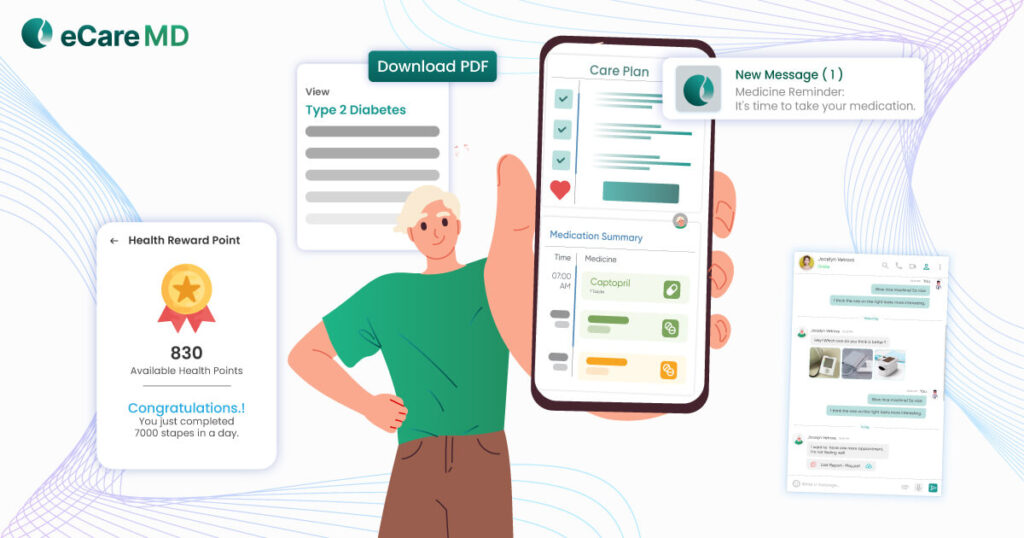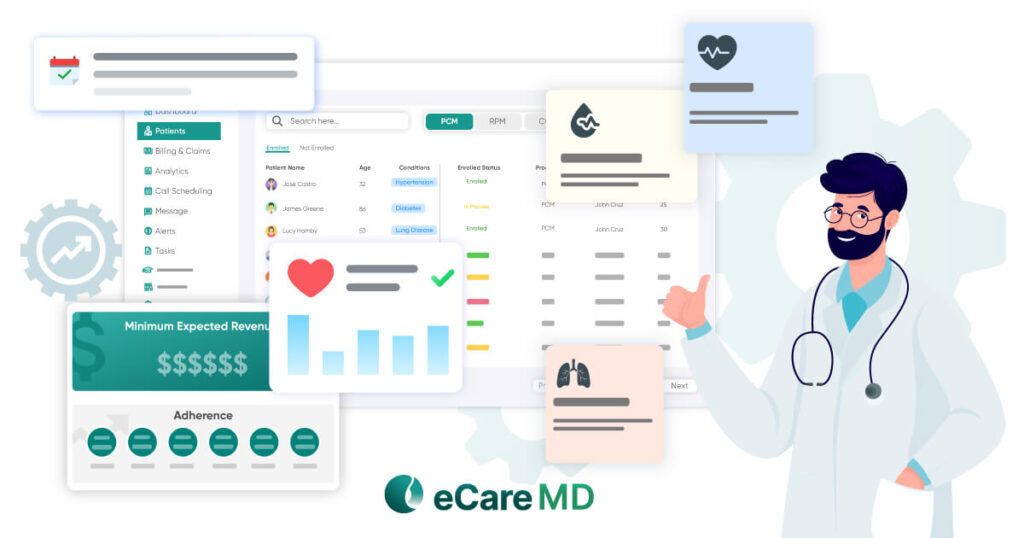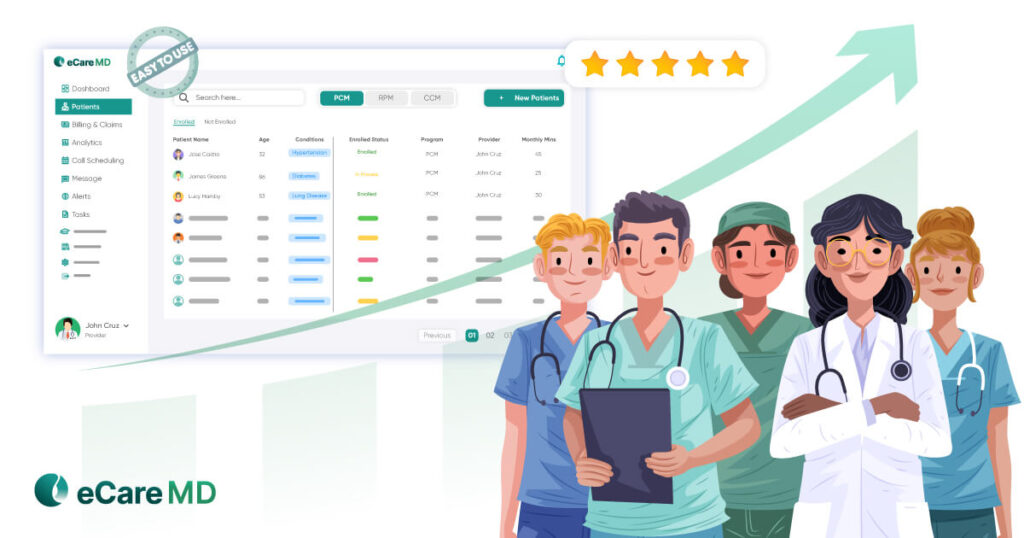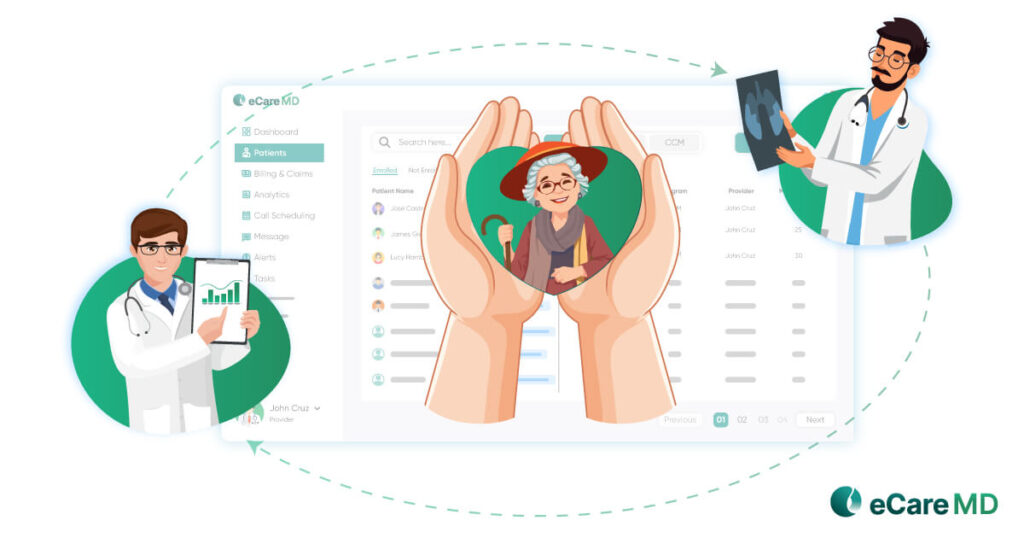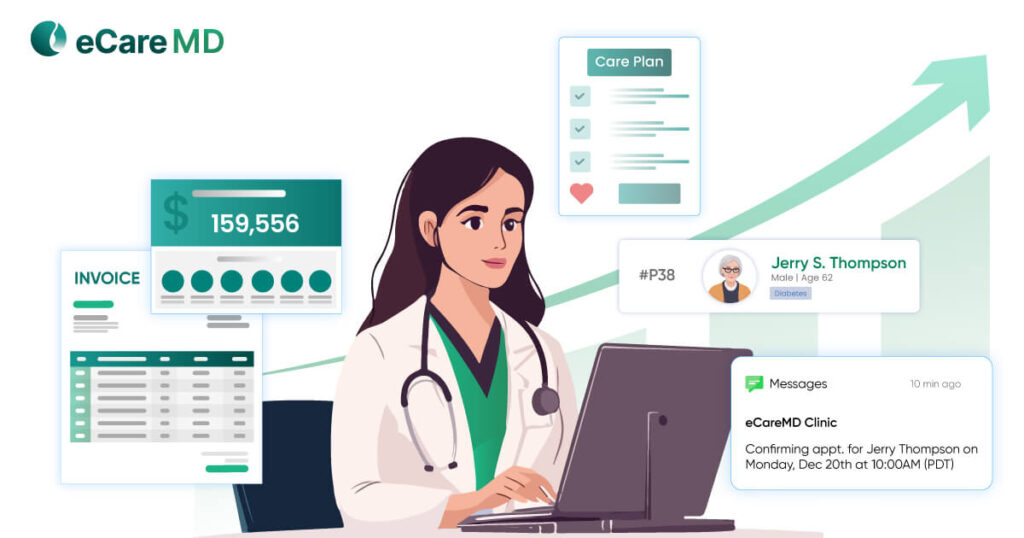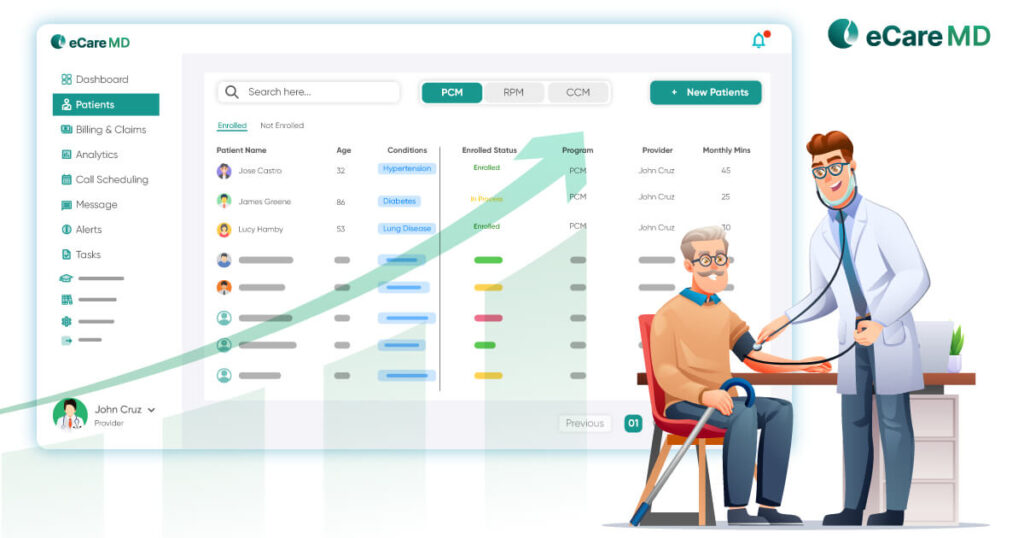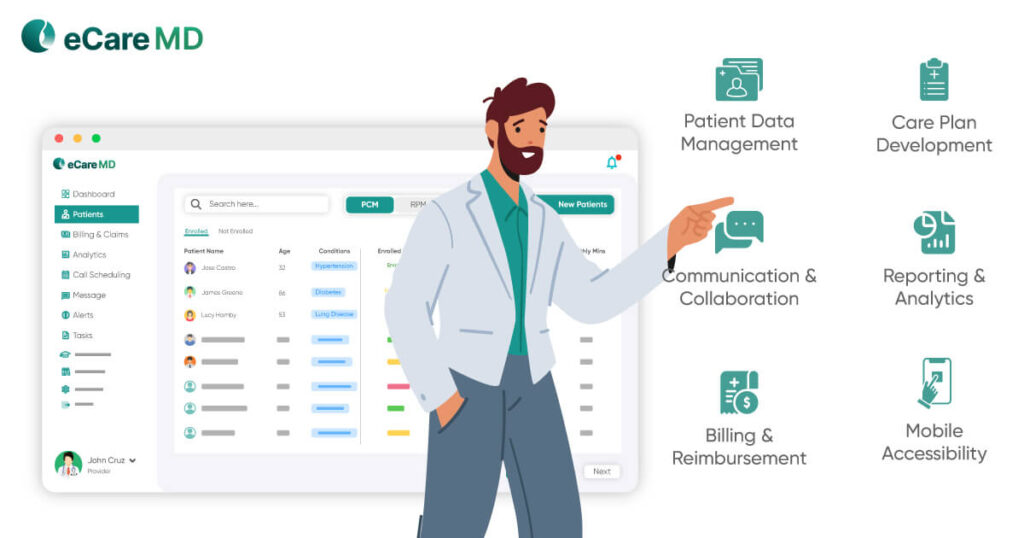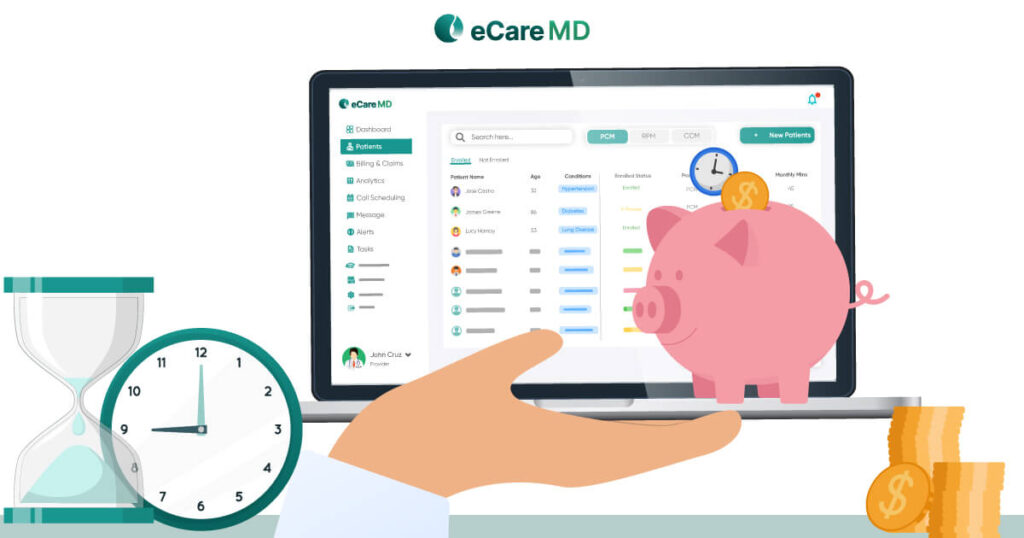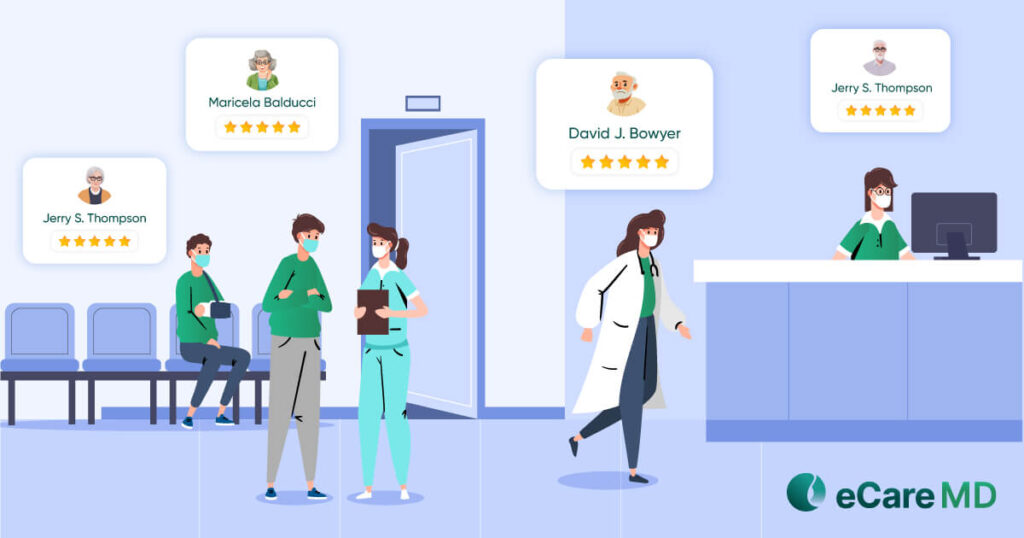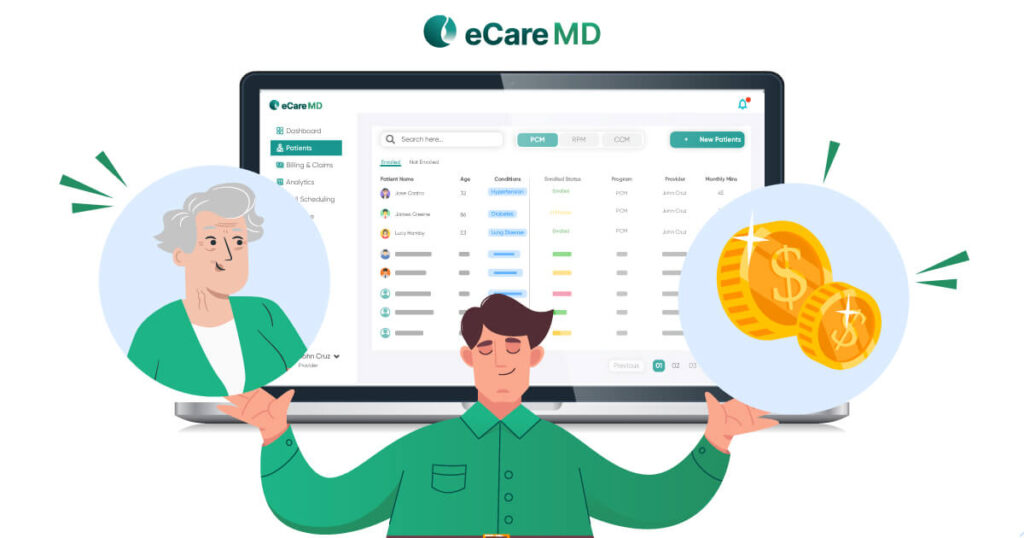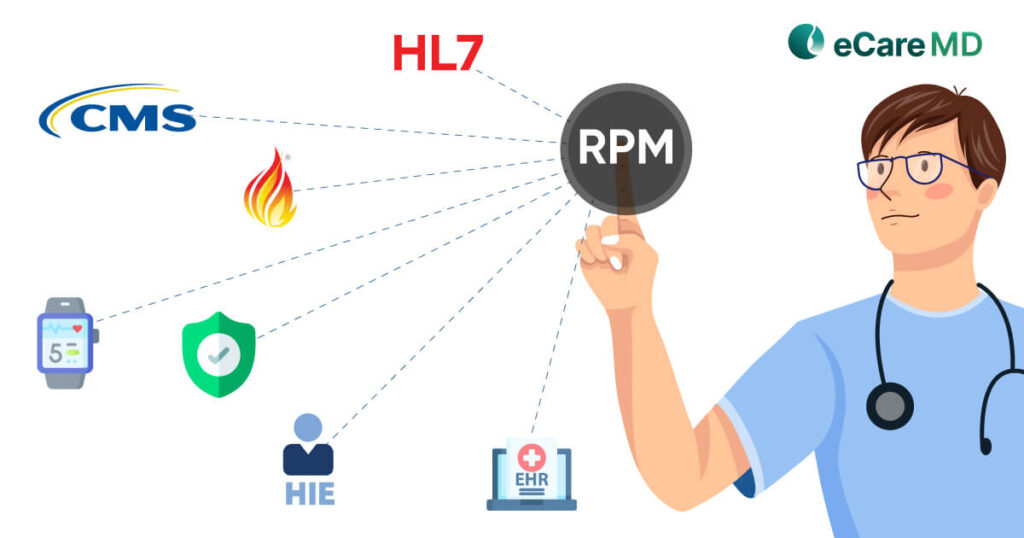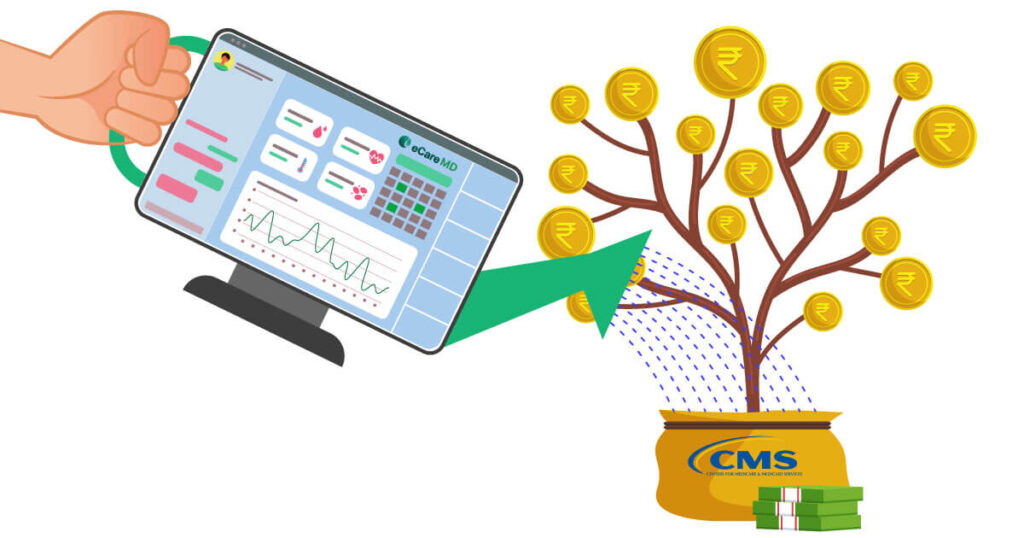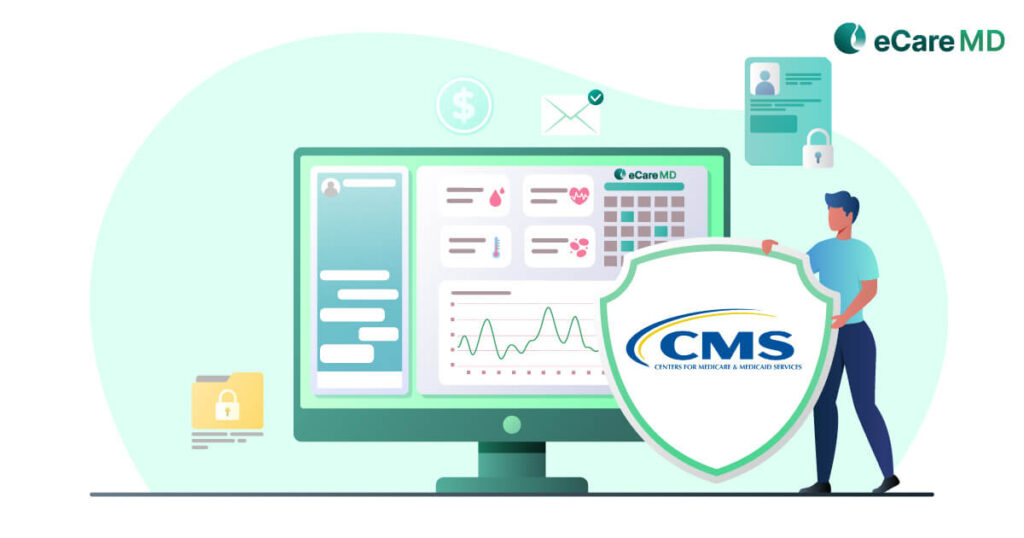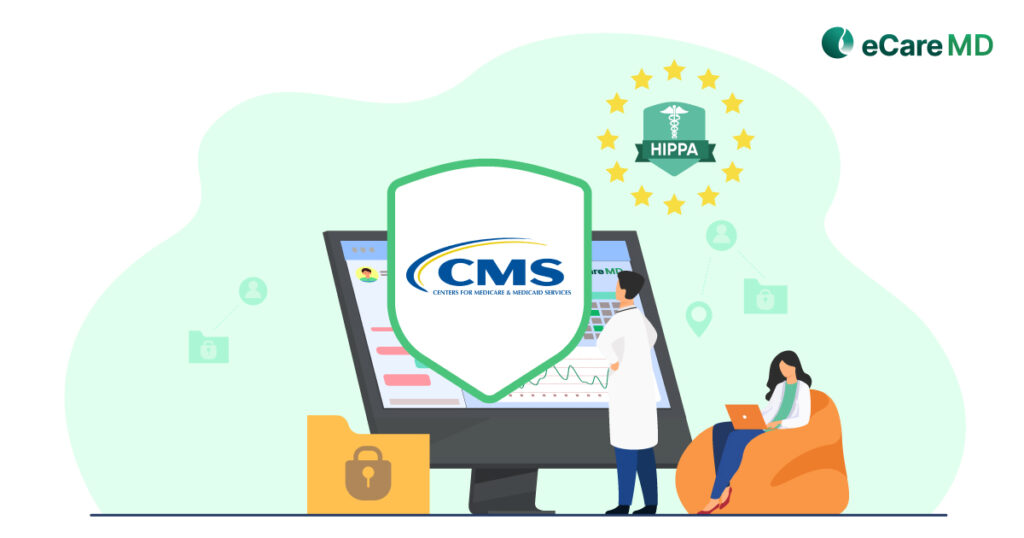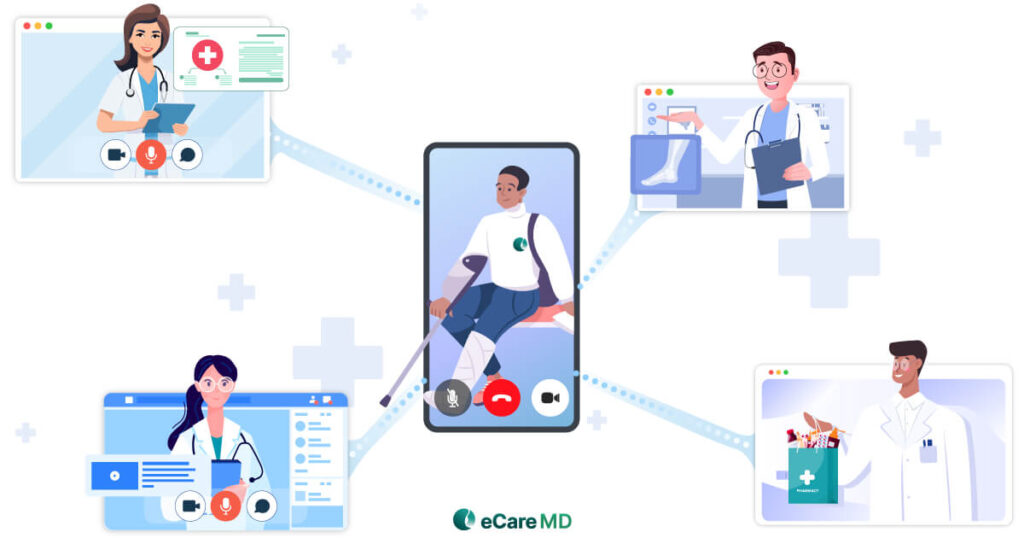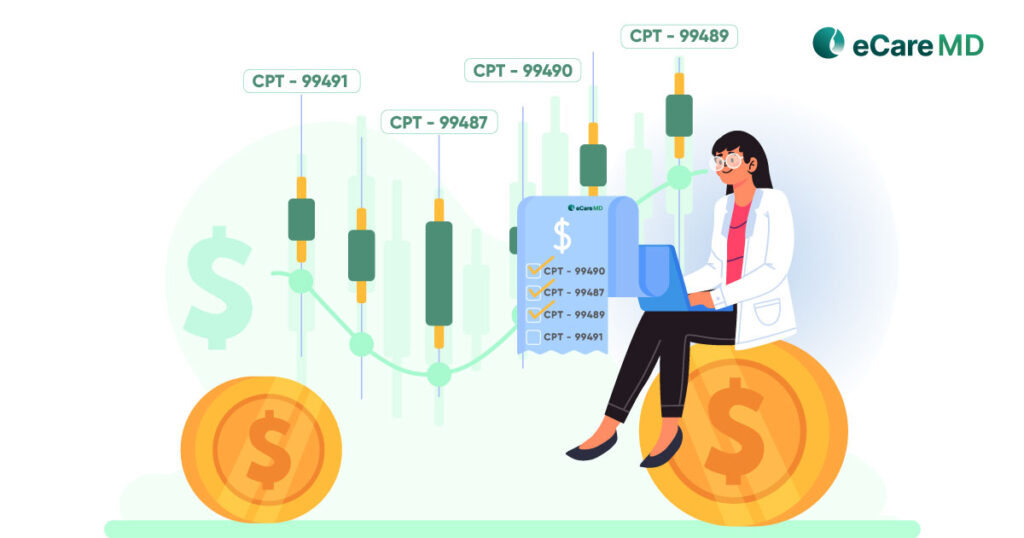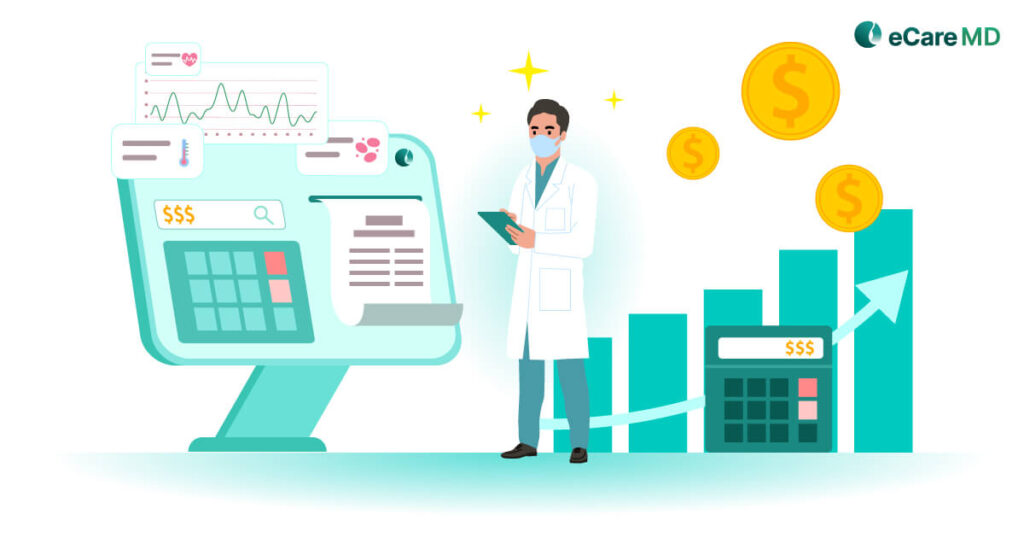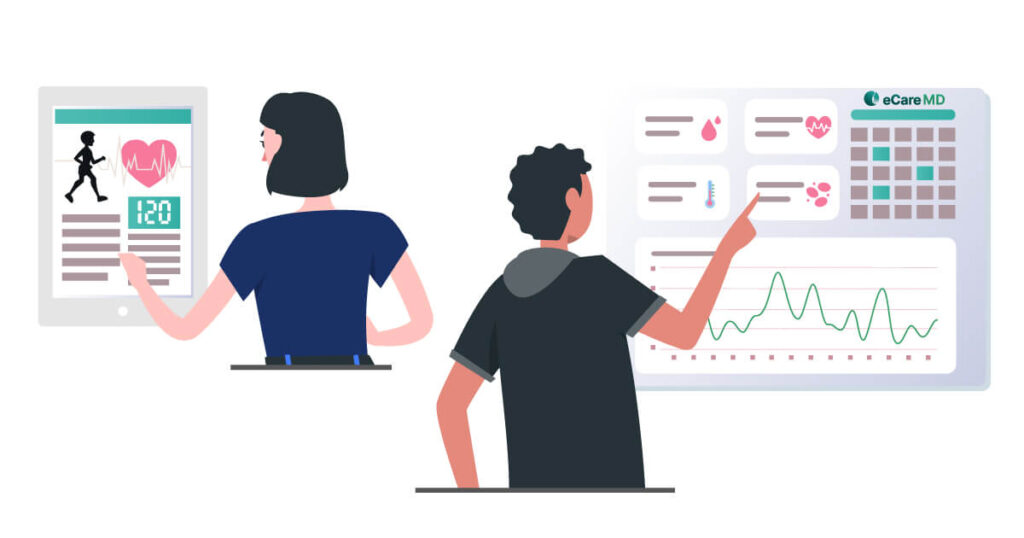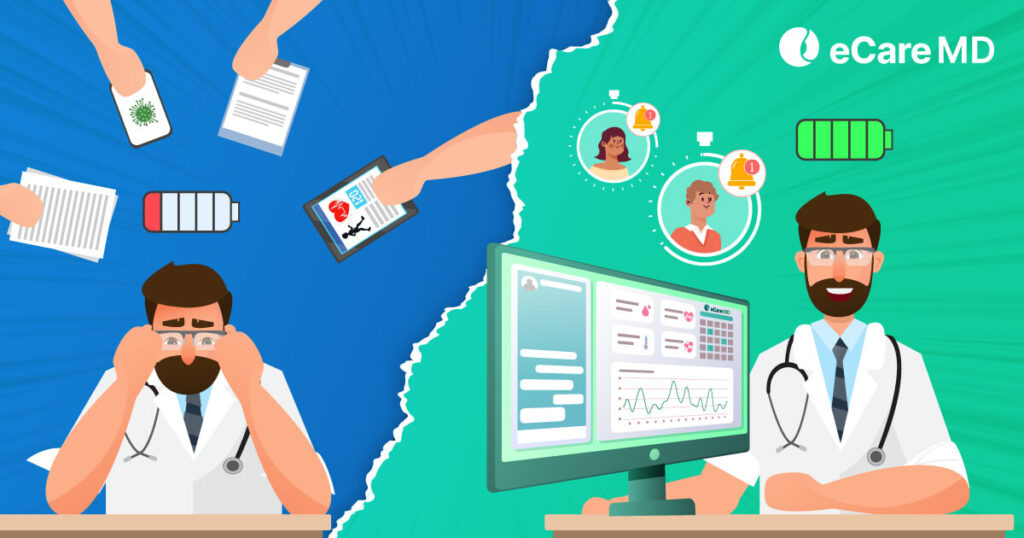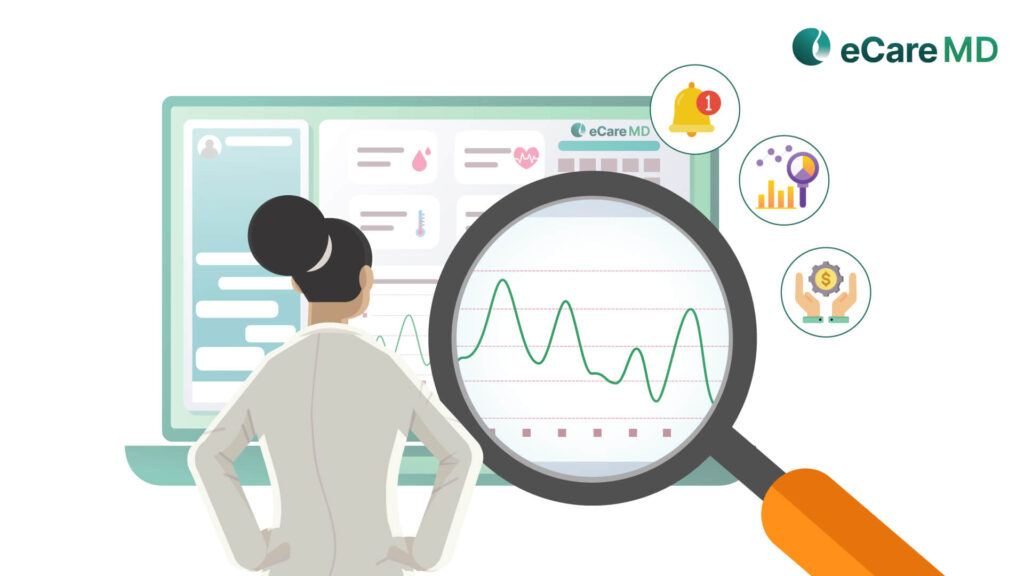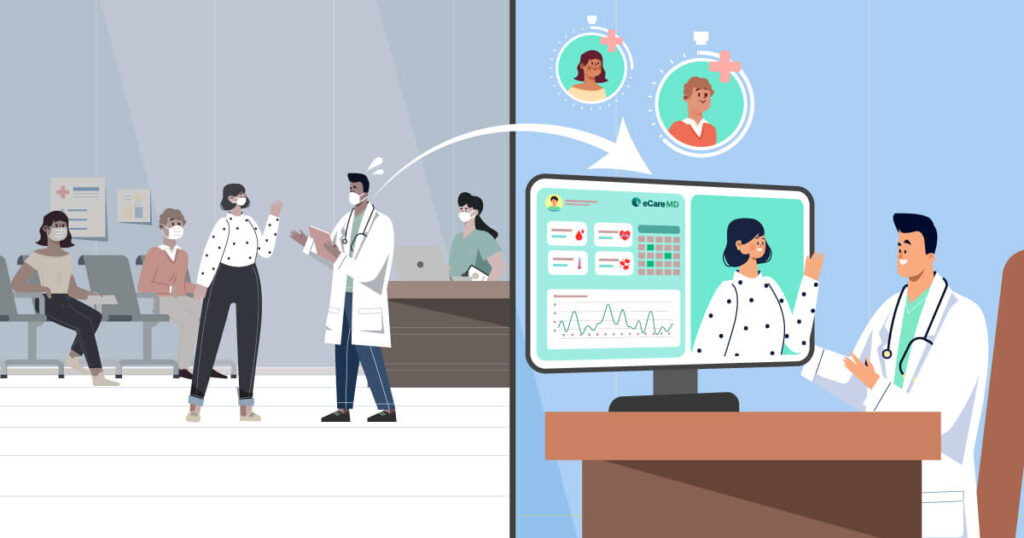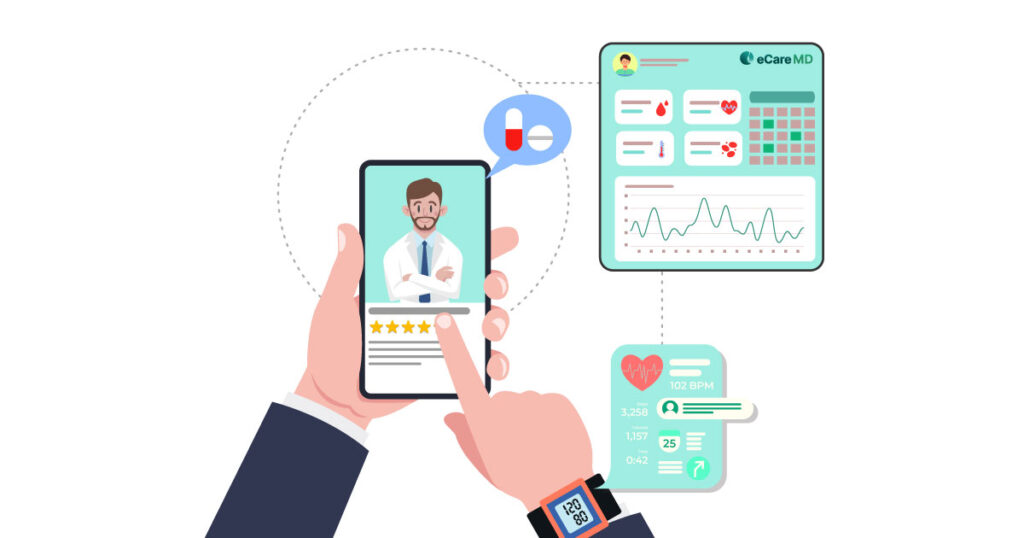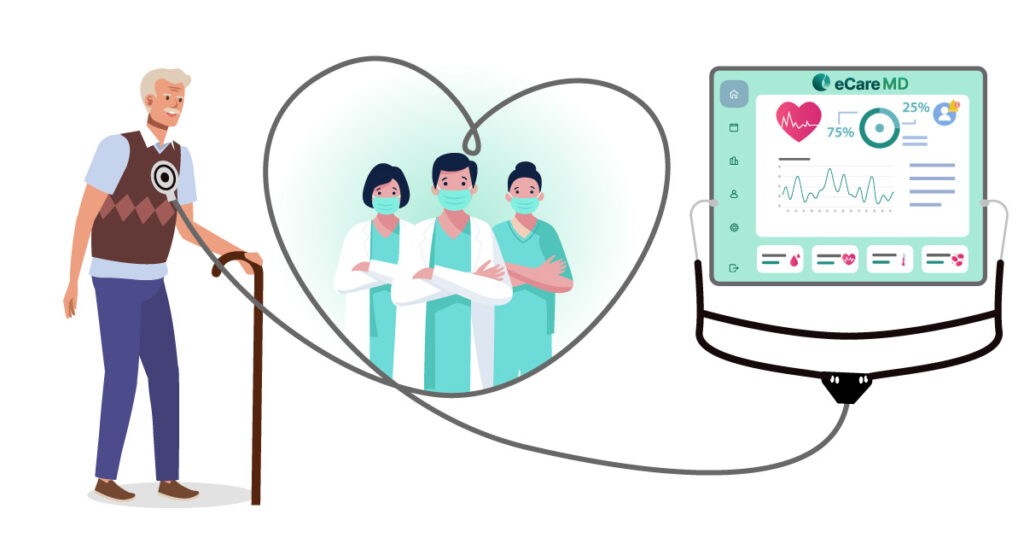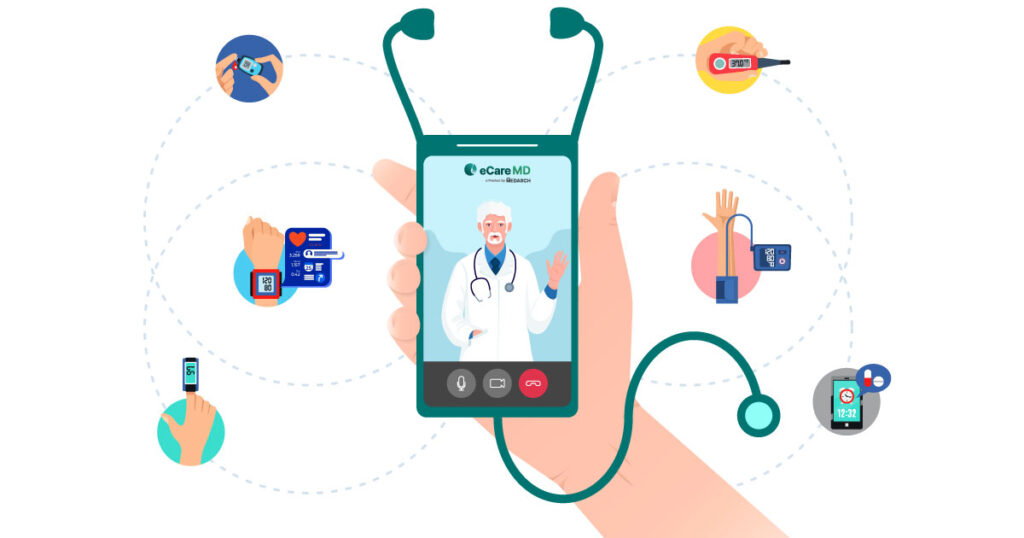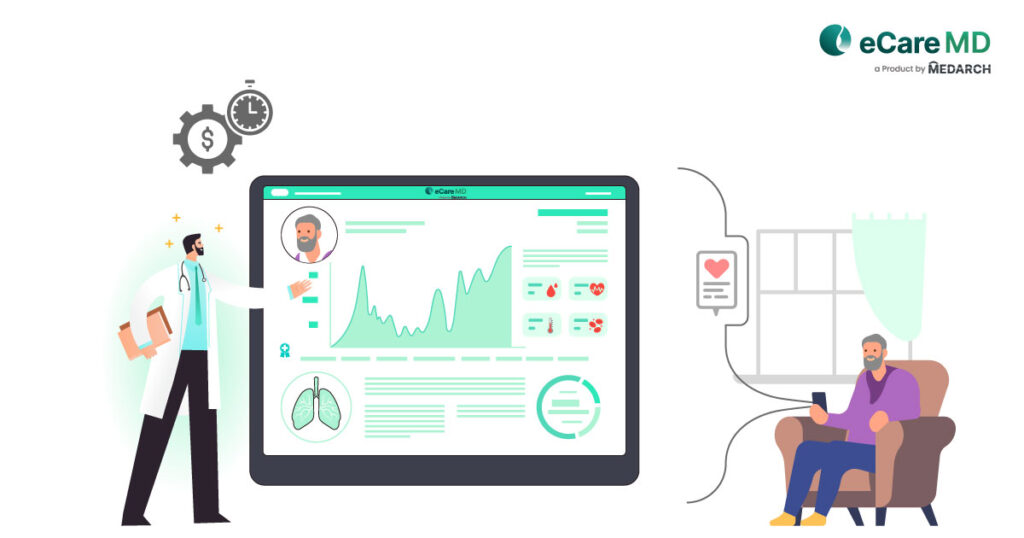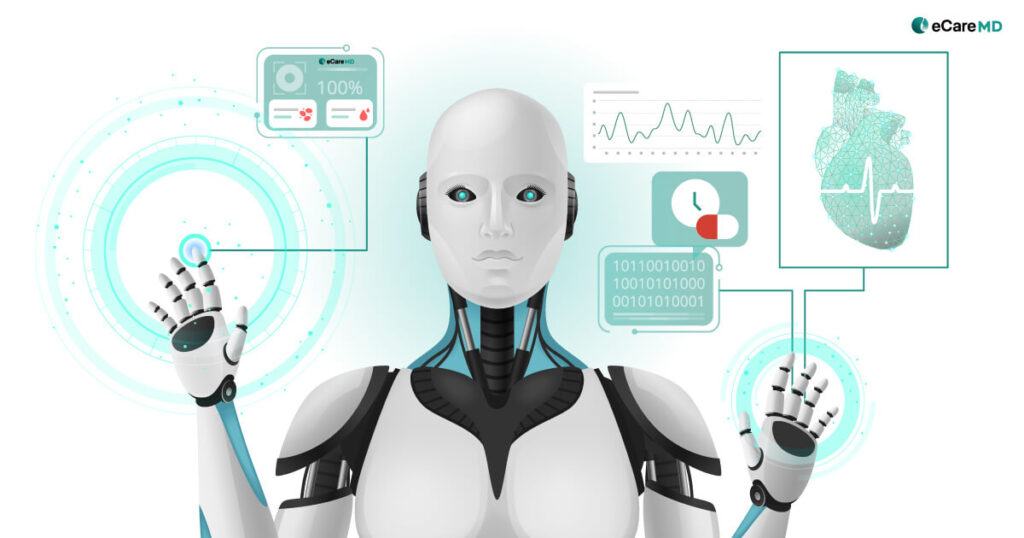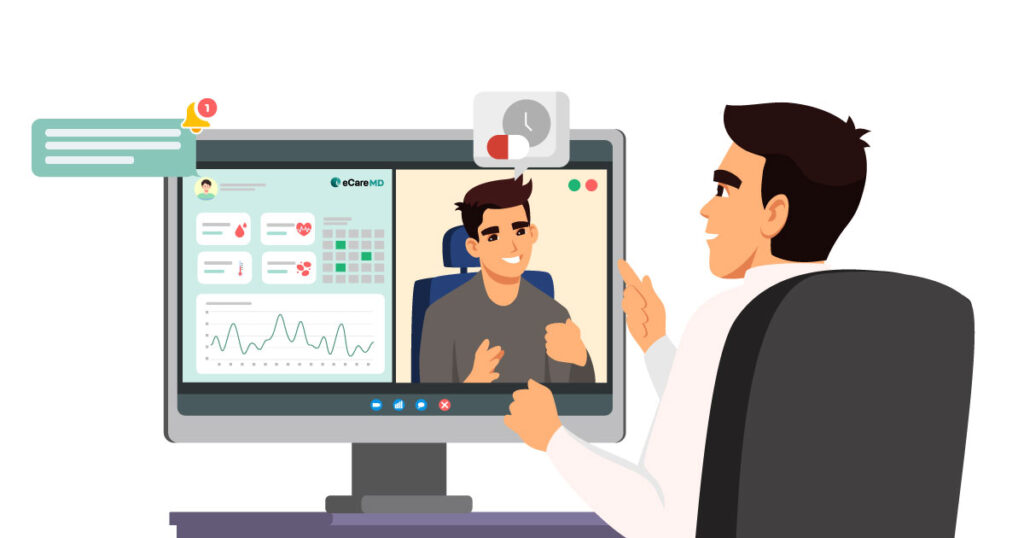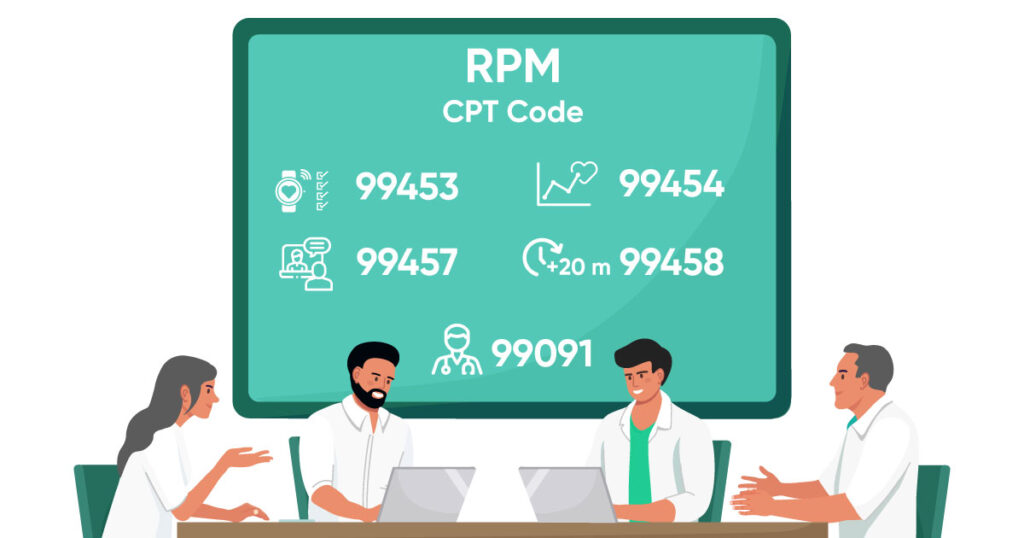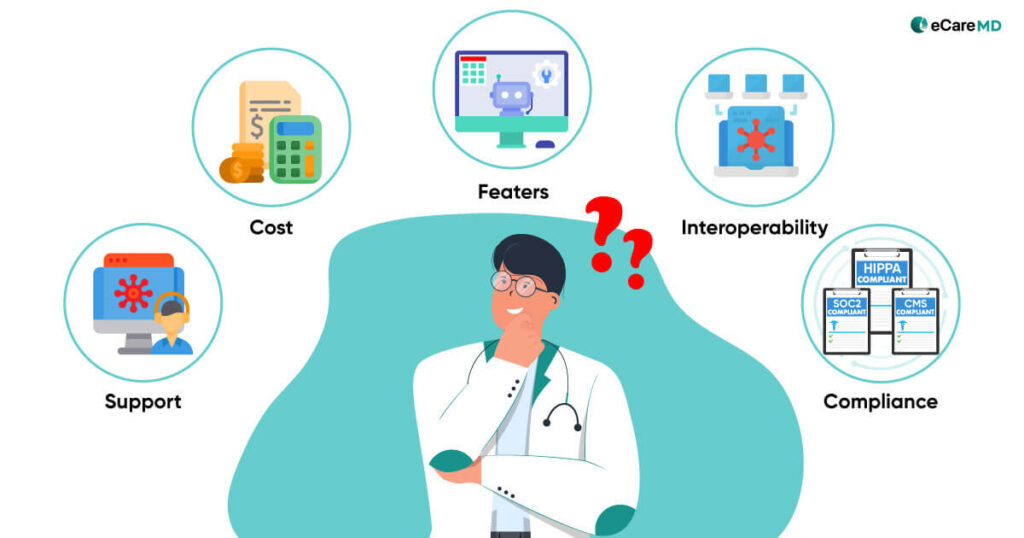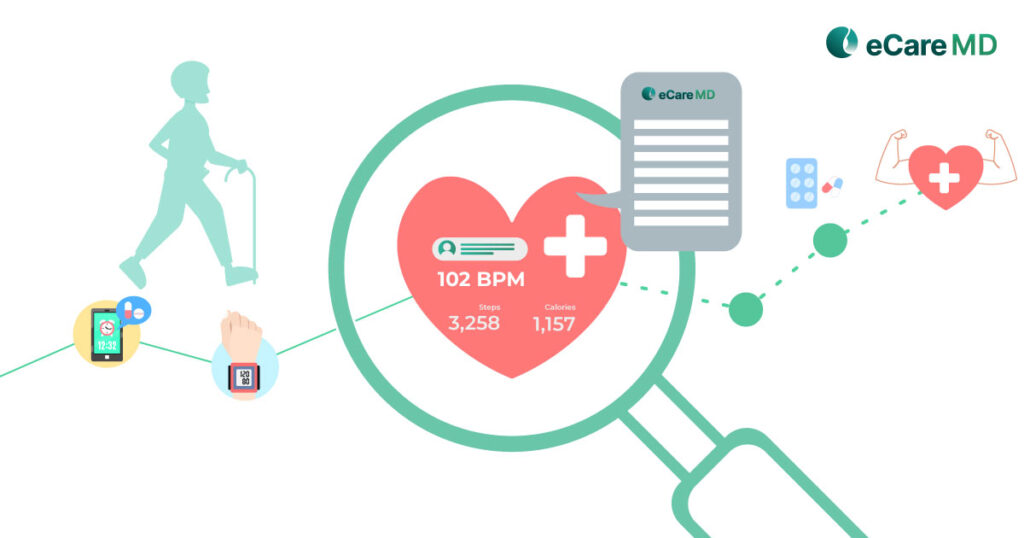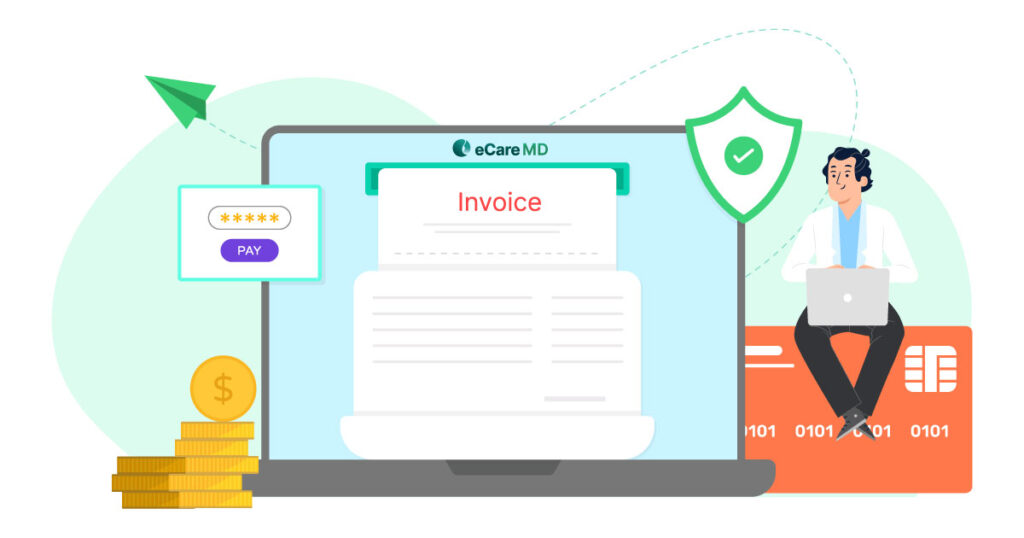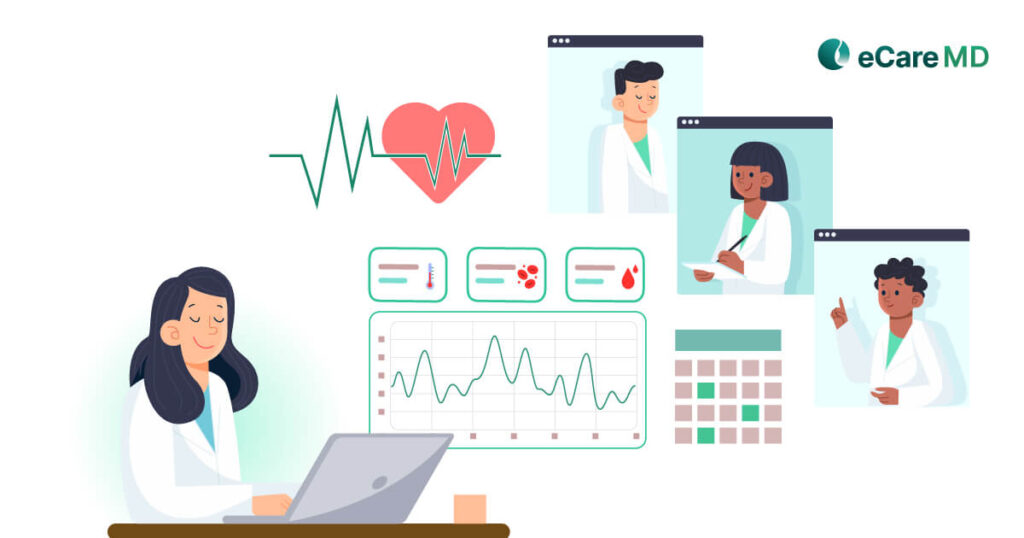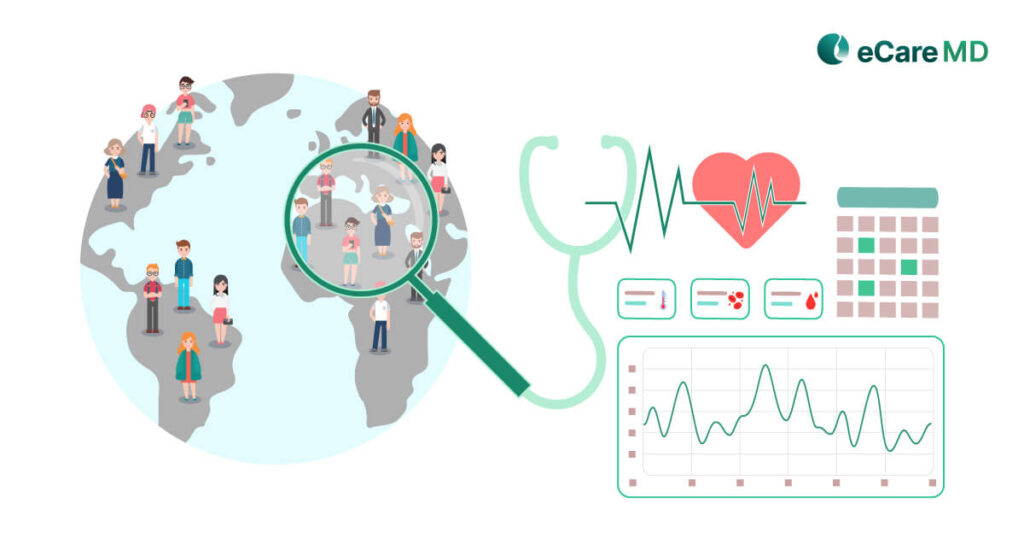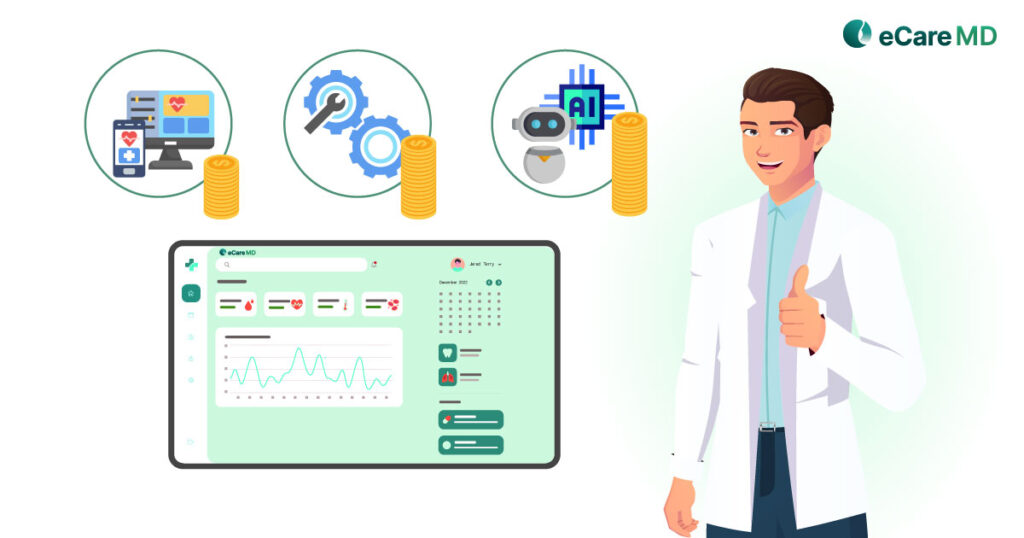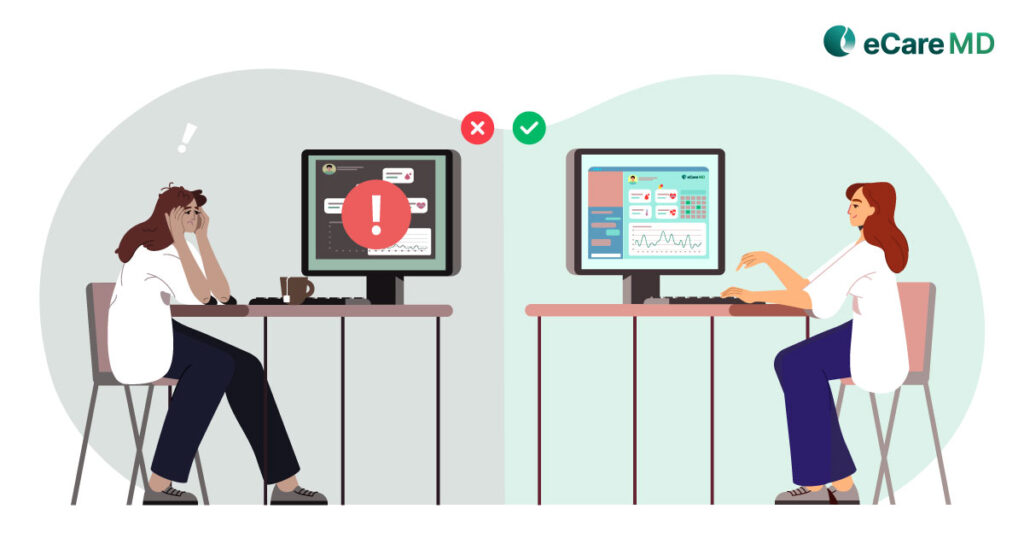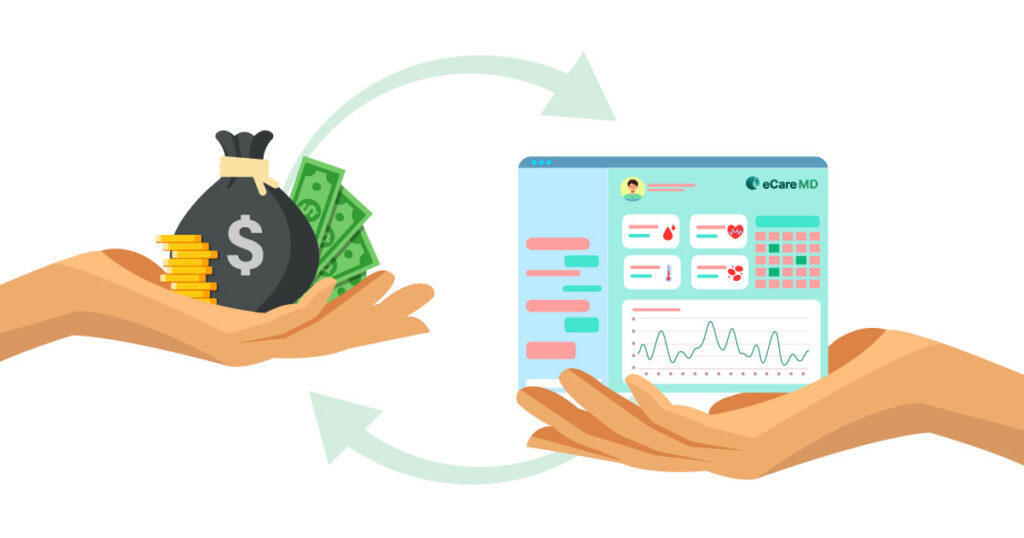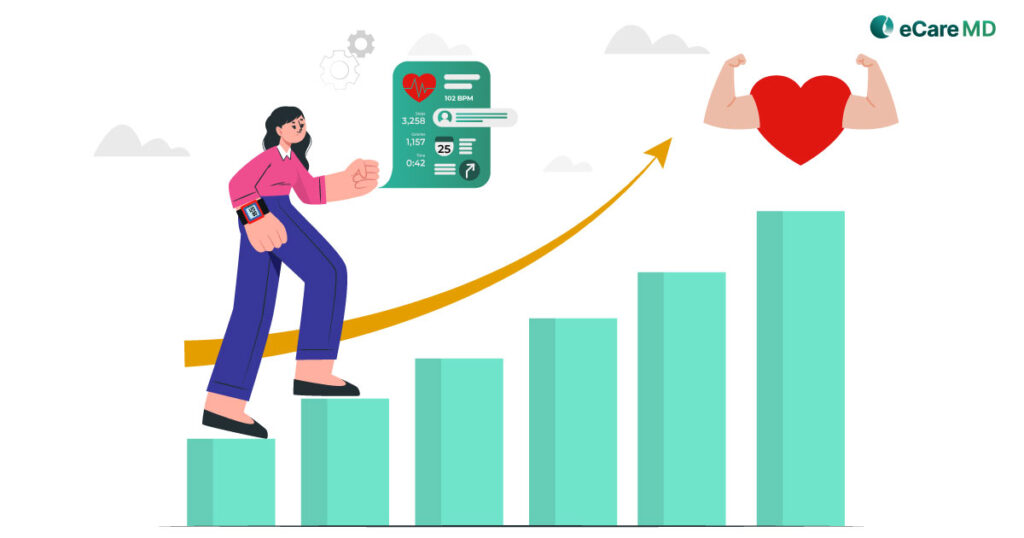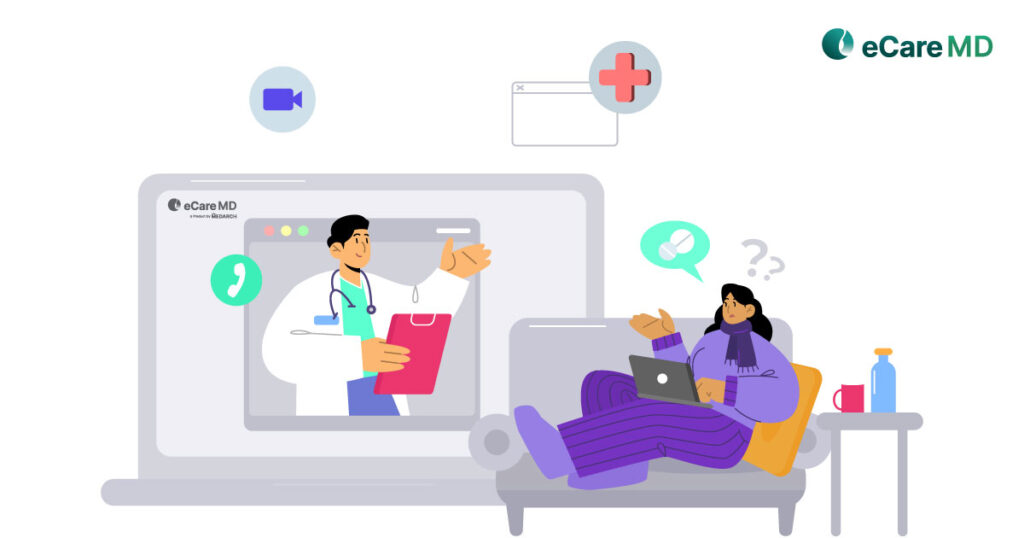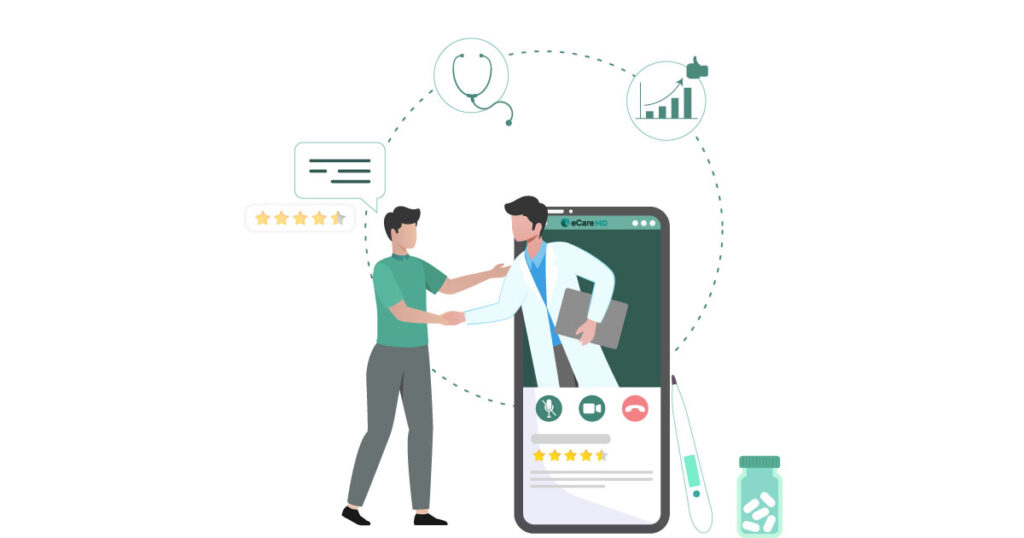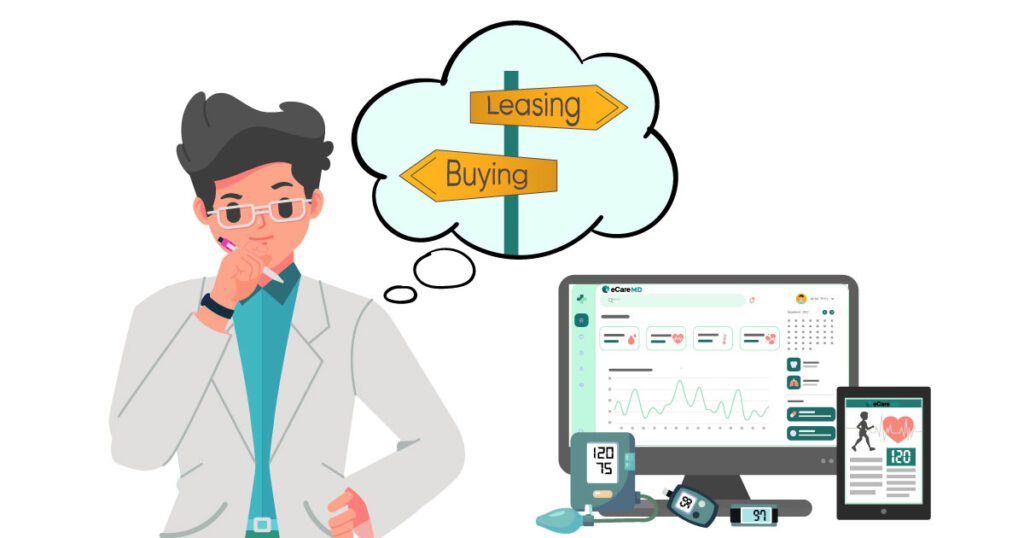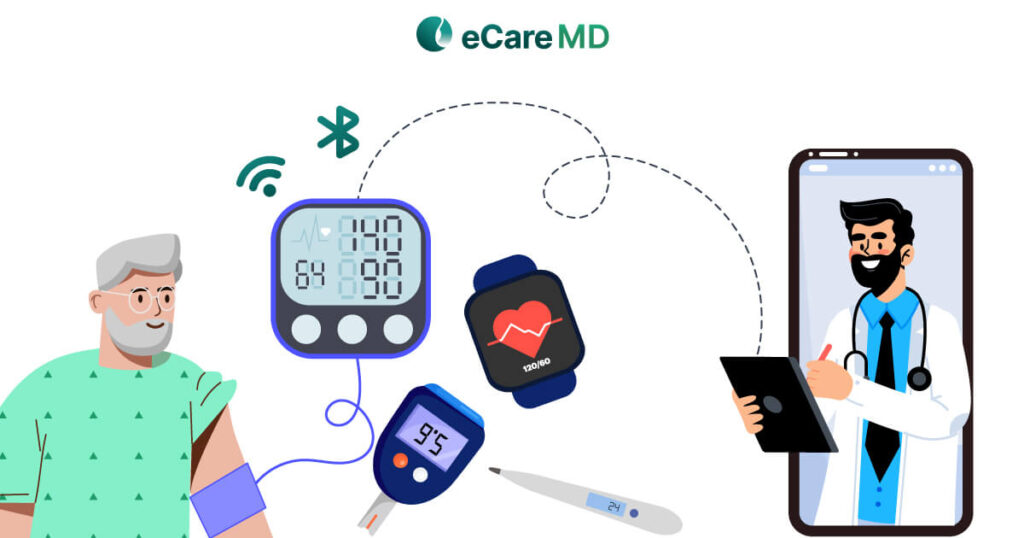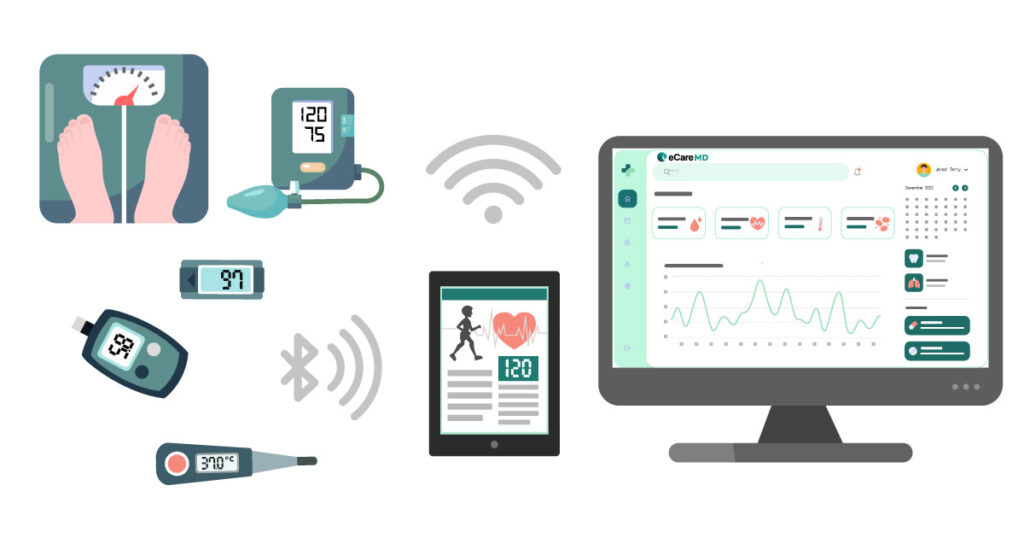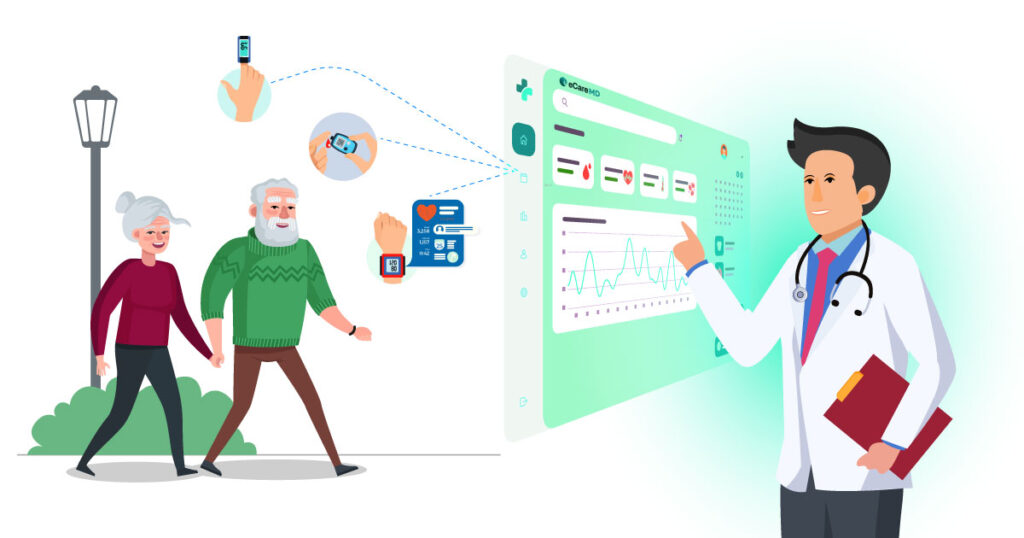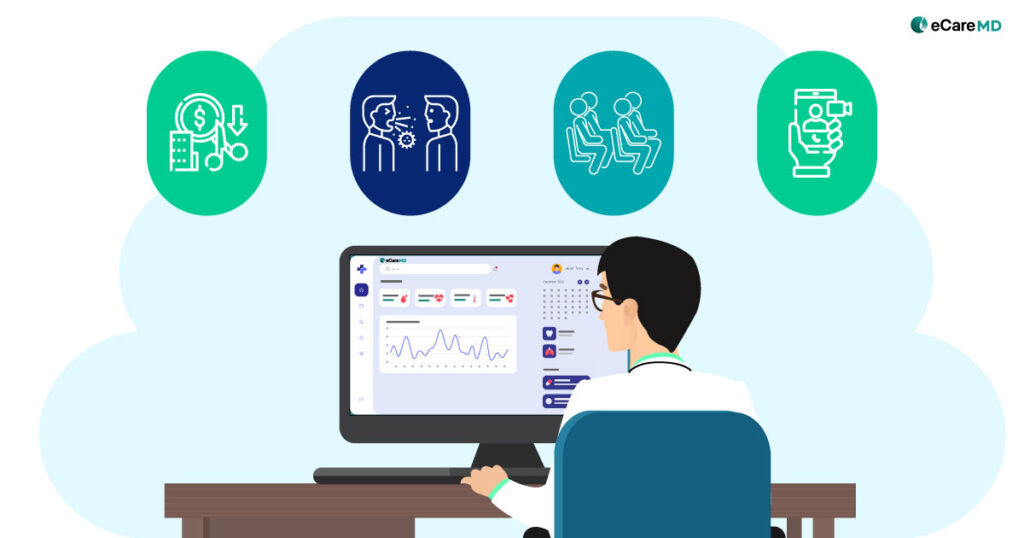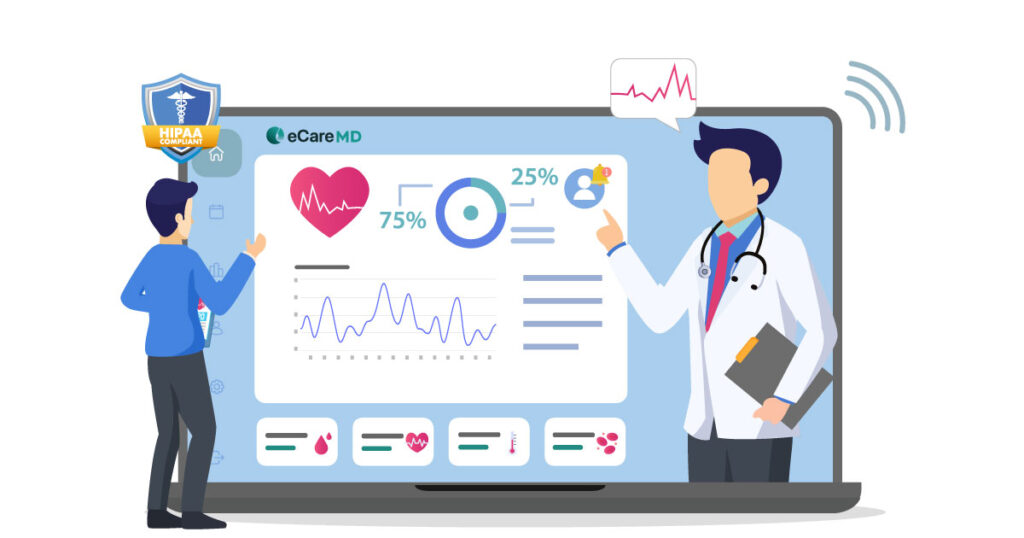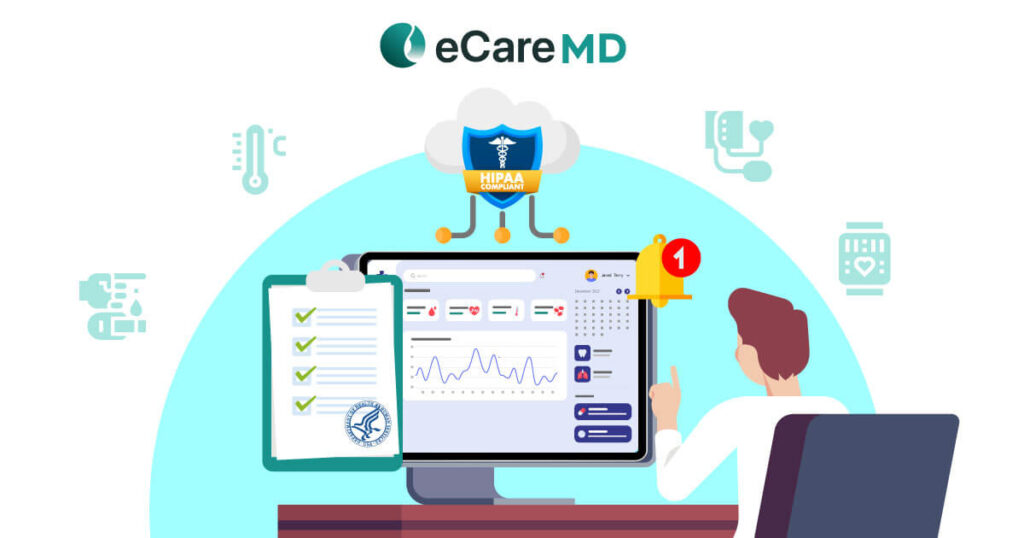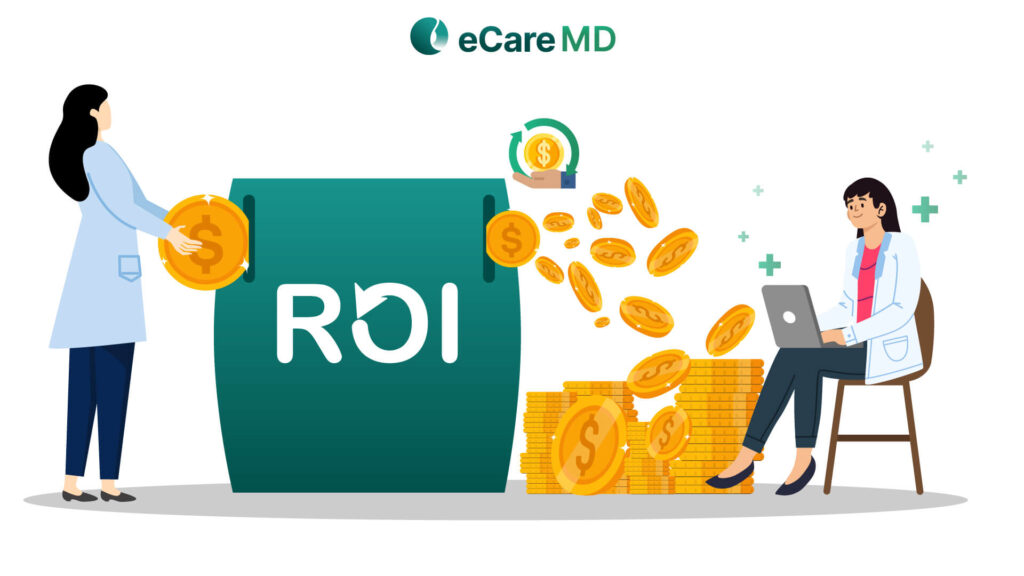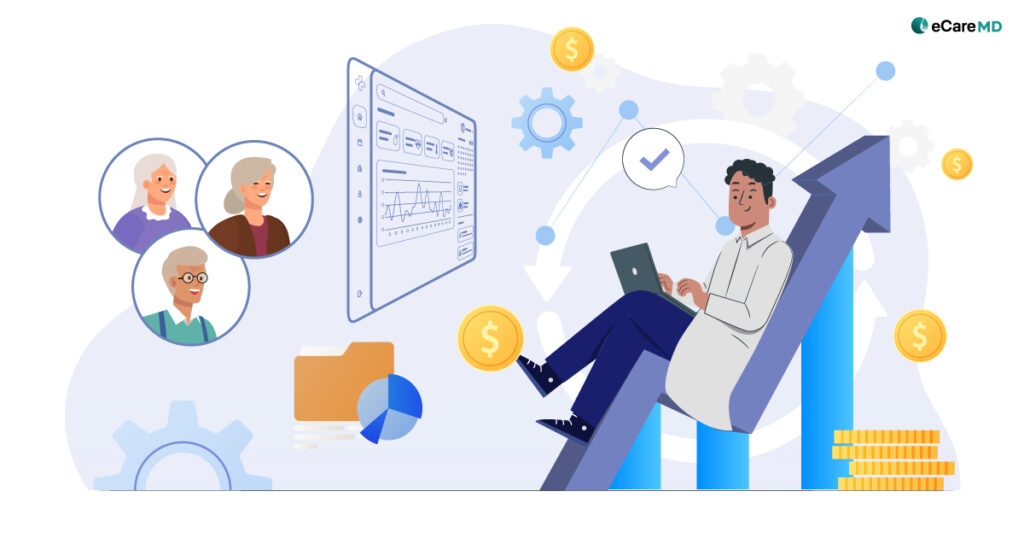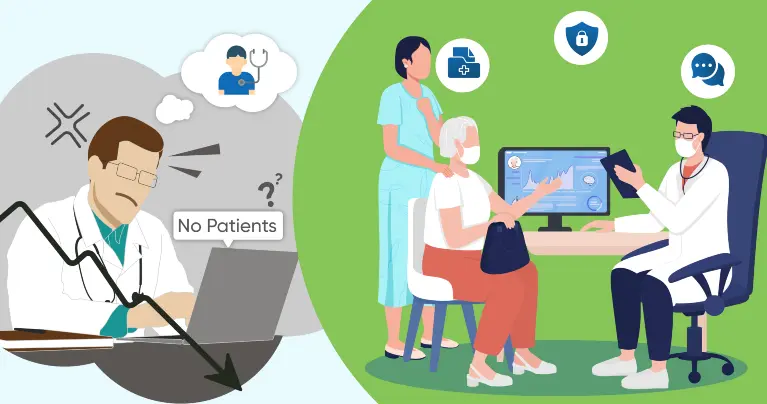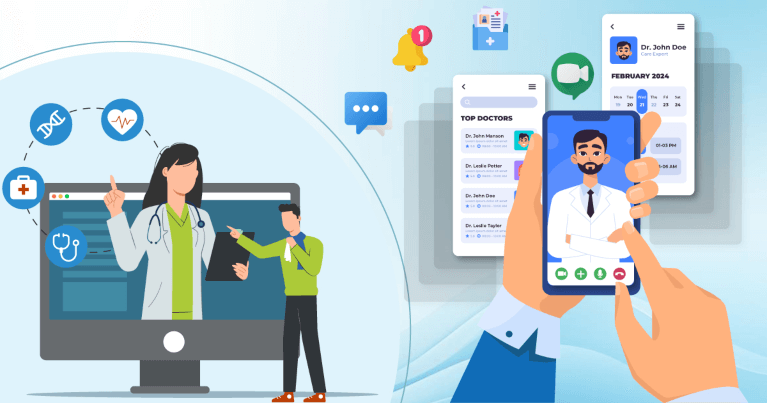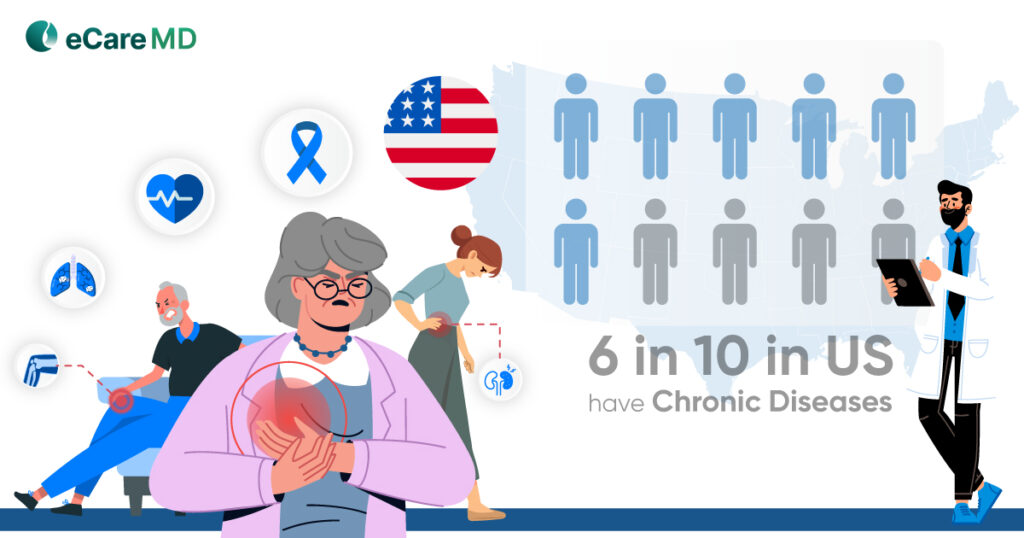Did you know that the healthcare industry has 97% of untapped patient data? This means that when you tap into this data successfully, you will have multiple new ways to improve patient outcomes, optimize workflows, and make patient care better.
Defining Your Key Performance Indicators (KPIs)
As you read in the introduction, data analytics and reporting help you in improving your PCM program along with patient care. But for that, you will need data, data which you can get by identifying the key metrics that align with your PCM goals. These metrics are called Key Performance Indicators (KPIs), and they show how good or bad you are performing in particular areas.
For instance, if you are aiming to improve patient engagement, increase care plan adherence, and reduce your overall costs. Then, you will track key performance indicators (KPIs) such as patient engagement rate, adherence rate, and total expenses. These indicators will provide you with the needed data that will help you know what you can do to improve patient engagement and treatment adherence.
Although data analytics can help you improve your practice, it can not achieve what is impossible and immeasurable. So, when you are setting goals, remember that your goals should be measurable and realistic. For example, reducing patient readmission rates for PCM patients by 15% in the next six months is a measurable and realistic goal instead of aiming to reduce it as much as possible.
But, while all of this is going on, there is one crucial part that you must not forget, and that is clearly defining your KPIs to drive effective growth. When you define your KPIs clearly and categorize them into clinical, financial, and operational KPIs, it ensures that reporting is focused on your specific and measurable goals. With this, you can avoid the collection of unnecessary data and can improve the accuracy of your decisions.
In short, when you define your KPIs clearly, you get more precise reports that help you achieve your goal more effectively. So, you need PCM software that shows you these KPIs and keeps track of the improvements. Let’s see what features help you do this and more.
Essential Reporting Features to Look For
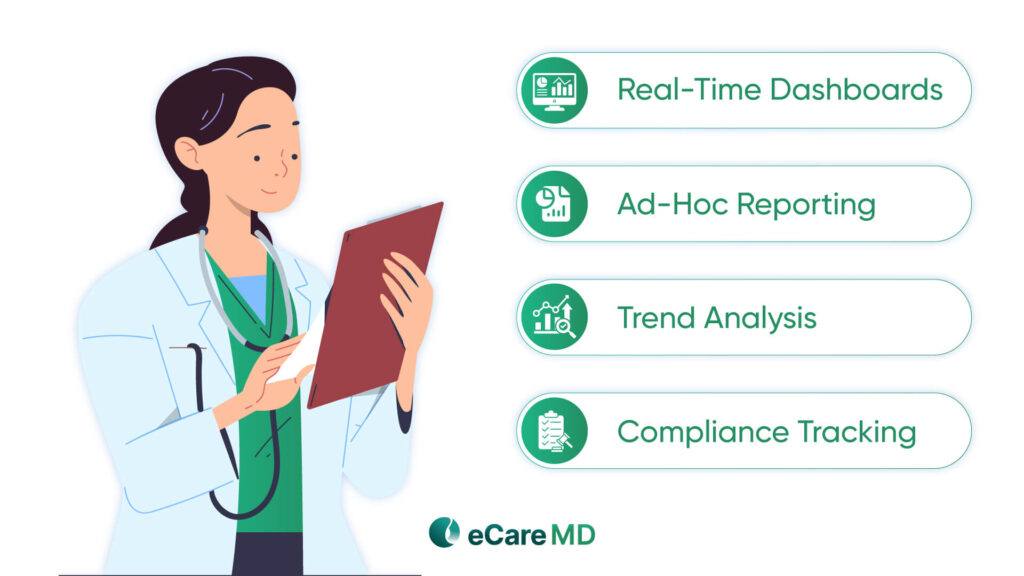
When you hit the market to look for PCM software, you will see a great number of PCM software solutions with reporting and analytical features. That is why, to get the right one, you need to have some idea of the features that are effective in reporting. So, let’s take a look at some of the features that will help you get the right PCM software:
- Real-Time Dashboards
The right PCM software comes with the ability to visualize the key metrics in the form of charts and other easy-to-understand formats. Even if the software accurately tracks the KPIs but fails to present them in an easily understandable way, it is not the right software.
Furthermore, it should be able to customize the reports to track a specific patient group, such as patients with heart conditions or diabetic patients. This makes reporting data more specific, increasing the accuracy, and with this, when software has automated alerts for critical changes in a patient’s health, then the software is the right software.
- Ad-Hoc Reporting
This feature allows you to generate custom reports almost immediately, as you can use filters to get data for a specific condition. For example, if you want to know how many patients with diabetes visited last month, you can do so with a few clicks. Moreover, with this, you can explore the data from different levels, and it allows you to drill down to a deep analysis of a problem to get to its roots. Also, sharing and exporting data becomes much easier with this, as it allows you to export data in CSV, Excel, and PDF. With this, you can easily use the data for various purposes, from official to presentation.
- Trend Analysis
The PCM software that is capable of reporting must have the feature to track patterns and trends in patient health using the patient data. This feature is a must to know what the best treatment plan is to improve patient outcomes. Along with this, it also proves useful in predictive analytics for proactive care management. It allows you to identify high-risk patients through patient tracking and provides care before any complications arise and care gets interrupted. Moreover, tracking must visualize the data with the help of charts and graphs, for providers to understand it quickly and effectively. This reduces the time required for analysis and improves the care plan generation. If the software solutions you are looking at lack this, then it is not the right one.
- Compliance Tracking
In the right PCM software, the reports it generates are designed to easily meet all the rules and compliances such as HIPAA and the Affordable Care Act. Also, the software has the ability to record the usage of the data in the EHR and log who accessed it for what purpose. This makes it easy to ensure accountability and security. In addition, it is able to track the billable time of the treatment given through the PCM software and maintains all the records accurately.
Key Features to Evaluate in Principal Care Management Reporting and Analytics Software
Download Free ChecklistThe Power of Actionable Analytics
In today’s fast-paced world, a software that tells you what happened is not enough anymore; you need a software that can give you a predictive and prescriptive report and analytics. So, when you start your hunt for the right PCM software, ensure that the software can bring your data to life and tell you what is going to happen with the help of advanced analytics.
It should be able to identify patients at high risk before their condition escalates or complications arise. With predictive analytics, the software can do this by analysing the patterns and trends in patients and their past medical history. Moreover, along with this, it allows you to predict any future medical issues, and you can adjust the care plan as per the data. This also makes proactive intervention and lets you provide care to the patients on time.
Additionally, when integrated with your daily clinical workflows, it brings all the information you need at your fingertips. This creates a seamless decision-making process, where data just doesn’t get stored away, but brings active improvements to patient care. So, the right PCM software should utilize the power of actionable analytics to optimize care plans, streamline interventions, and ultimately elevate your PCM program to a new level.
User-Friendly Interface and Data Visualization
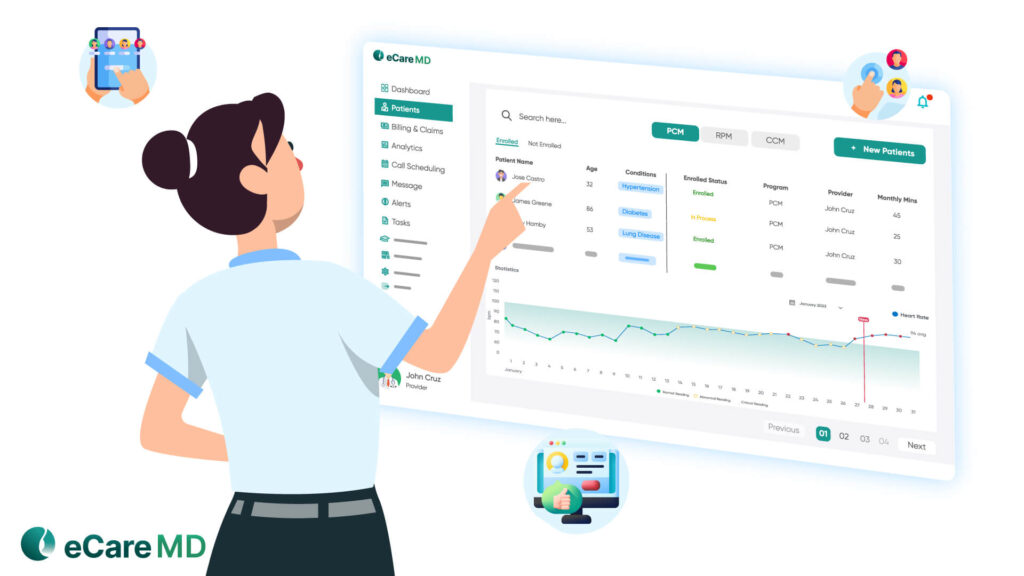
One important feature or need is the PCM software with intuitive dashboards and reporting tools for easy navigation. Imagine you are using a PCM software with advanced analytical tools, but you are navigating through a complicated dashboard. It will take a lot of time to find the right tool, and you will get frustrated more often.
So, a PCM software with an easy-to-navigate dashboard, as well as clear and concise data visualization principal care management makes understanding and analyzing data much easier. Along with this, you can not ignore data security and privacy. For that, look for software that has role-based access and multi-factor authentication to keep the data secure and accessible only when needed.
Moreover, care accessibility is crucial; therefore, ensure that the PCM software provides mobile accessibility. When providers and patients can access care on the go, they can review health information easily. This is especially important for providers as they can adjust care plans easily.
Integration and Data Interoperability
When you are exploring your options, check that the PCM software can seamlessly integrate with your existing EHR/EMR. This is vital as easy and unhindered access to the patient data makes the data analysis more effective. Even if you have software that is cutting-edge and advanced, if it fails to connect with patient records effectively, then all other features become ineffective.
Also, the software must be able to share patient data among other healthcare platforms like telehealth and remote patient monitoring (RPM). This ensures that the care is kept continuous, and when data is updated in one system, it gets updated in other systems simultaneously.
This also plays an important role in keeping the data consistent and accurate across the system, as it synchronizes all the available data. Moreover, ensure that it has API (Application Programming Interface) availability, which will help you integrate seamlessly with EHRs and other applications.
Vendor Support and Training

When you are looking for PCM software, the software vendor is also an important aspect, so you need to consider this as well. When you are finalizing the software or sorting through the options, ensure that the vendor offers a training program and helps in onboarding your staff.
You also need to verify that the vendor will respond on time when you need technical support and troubleshooting. So, pay attention to the response time of the vendor and choose the one that has quicker response times. Moreover, technology is advancing rapidly, and so are the analytical tools, which is why it ensures that it offers regular software updates and enhancements.
Additionally, there are several user communities that can help you in troubleshooting, so ask the vendor to connect you with these communities. Also, resources such as manuals for the analytical tools can help providers in self-learning. This is why you should make sure that the vendor provides all these resources in the PCM software.
Conclusion
In a nutshell, the right PCM software has the features that boost the efficiency of data analysis. In this real-time dashboard, ad-hoc reporting and trend analysis are some that are essential. These features help you in making informed and data-driven decisions, making the care plan generation more accurate.
Moreover, you need to ensure that the software can seamlessly integrate with EHR and EMR for smooth data sharing. This makes reporting more efficient and precise, bringing all the data to your fingertips. Also, consider your practice needs and requirements and choose the PCM software that fits your needs.
But, if you want to avoid going through this hassle, then with eCareMD you can easily find all you need in a single software. So, contact us and let us make your practice data-driven like many others we have.


